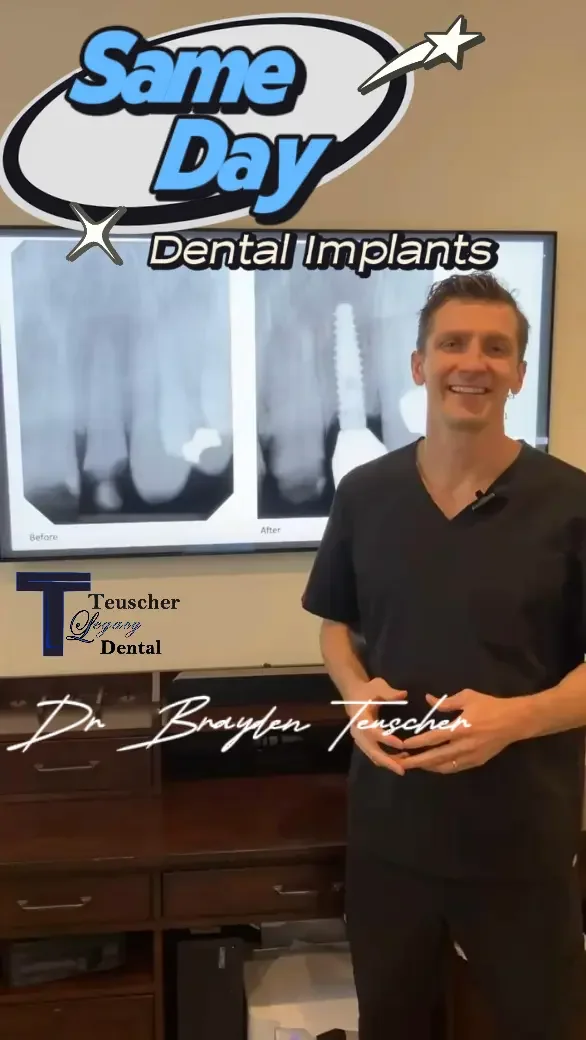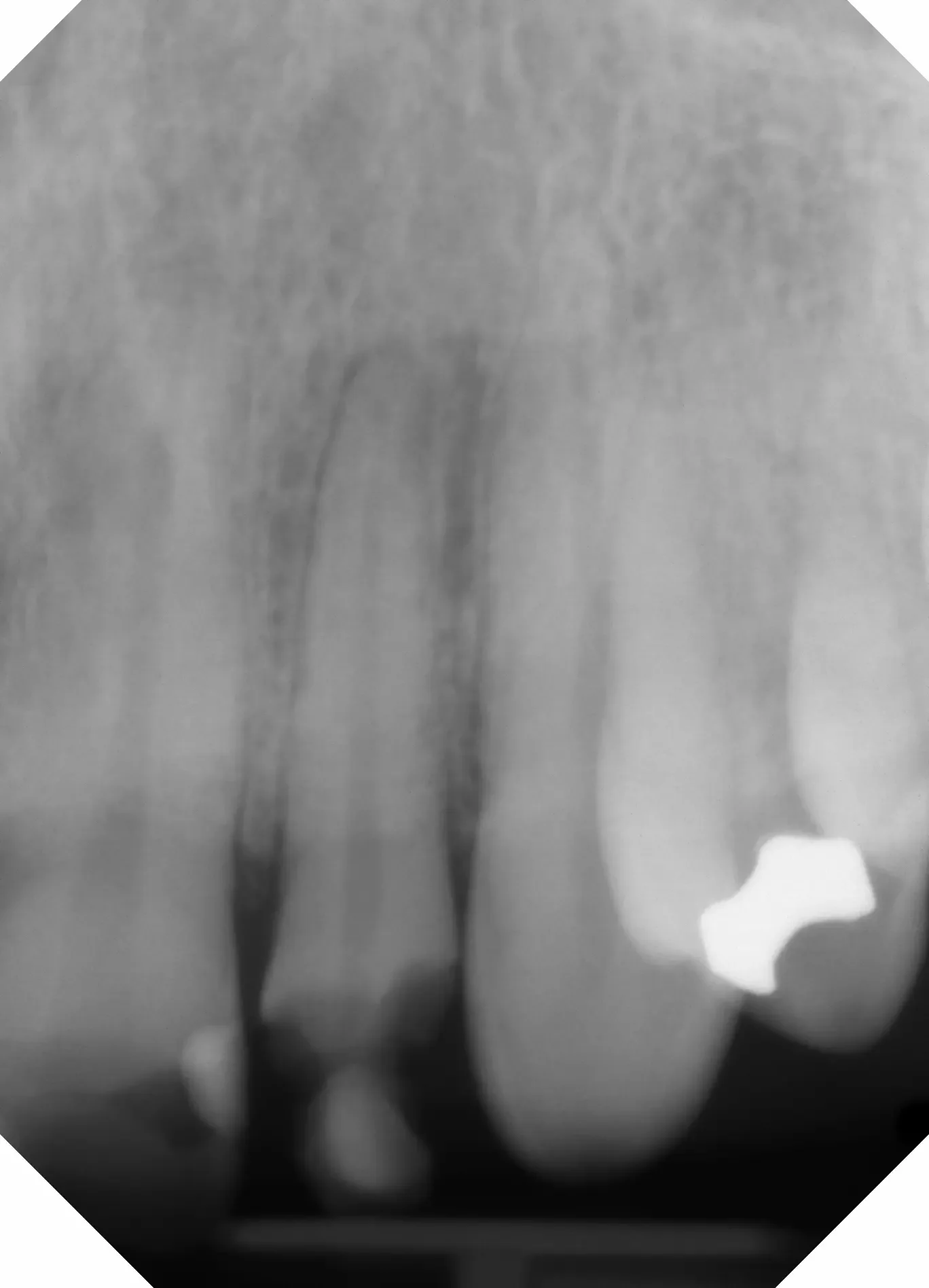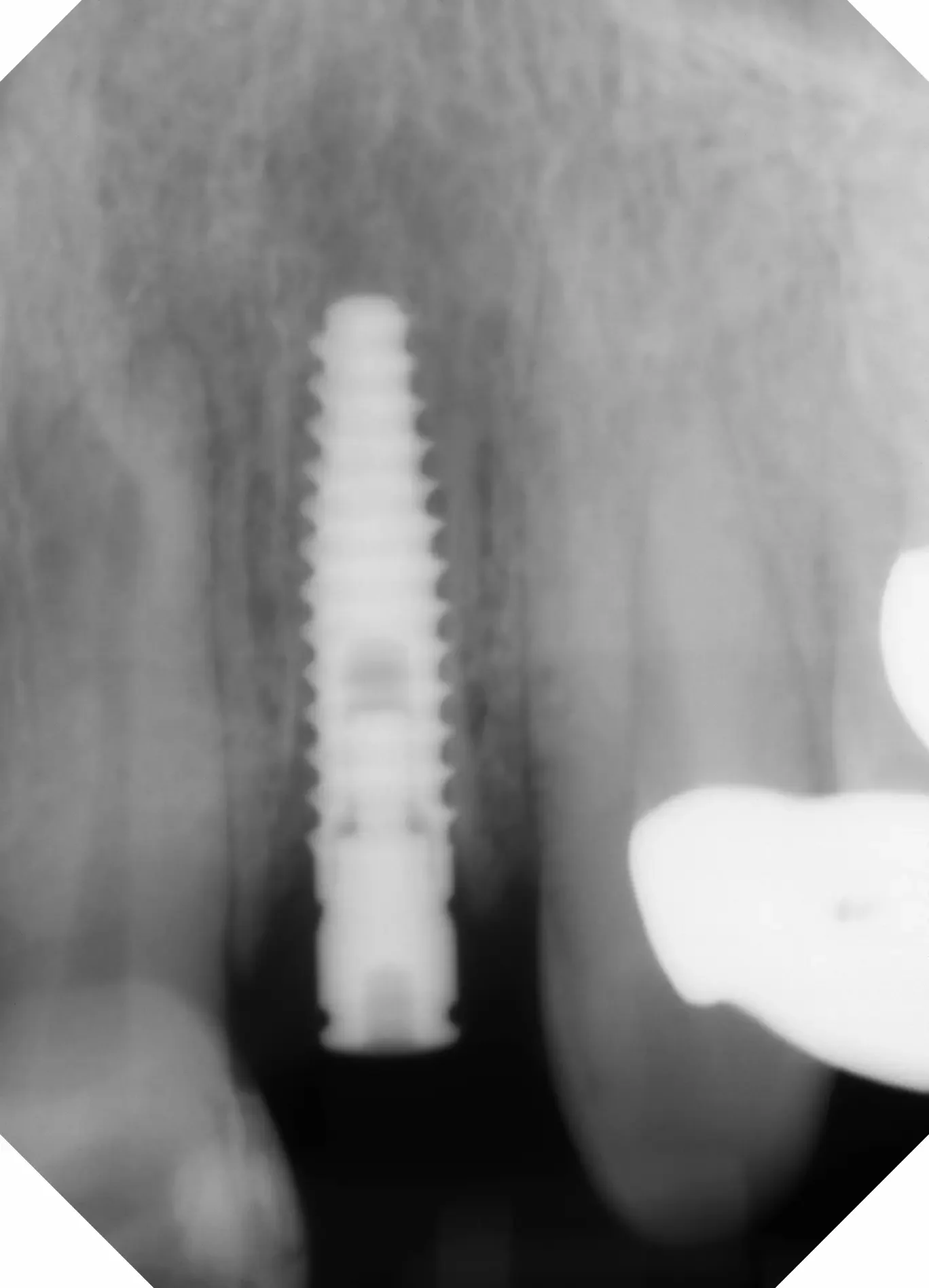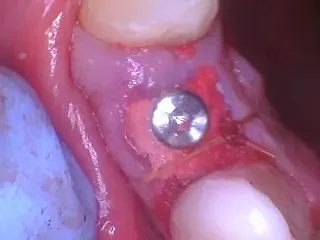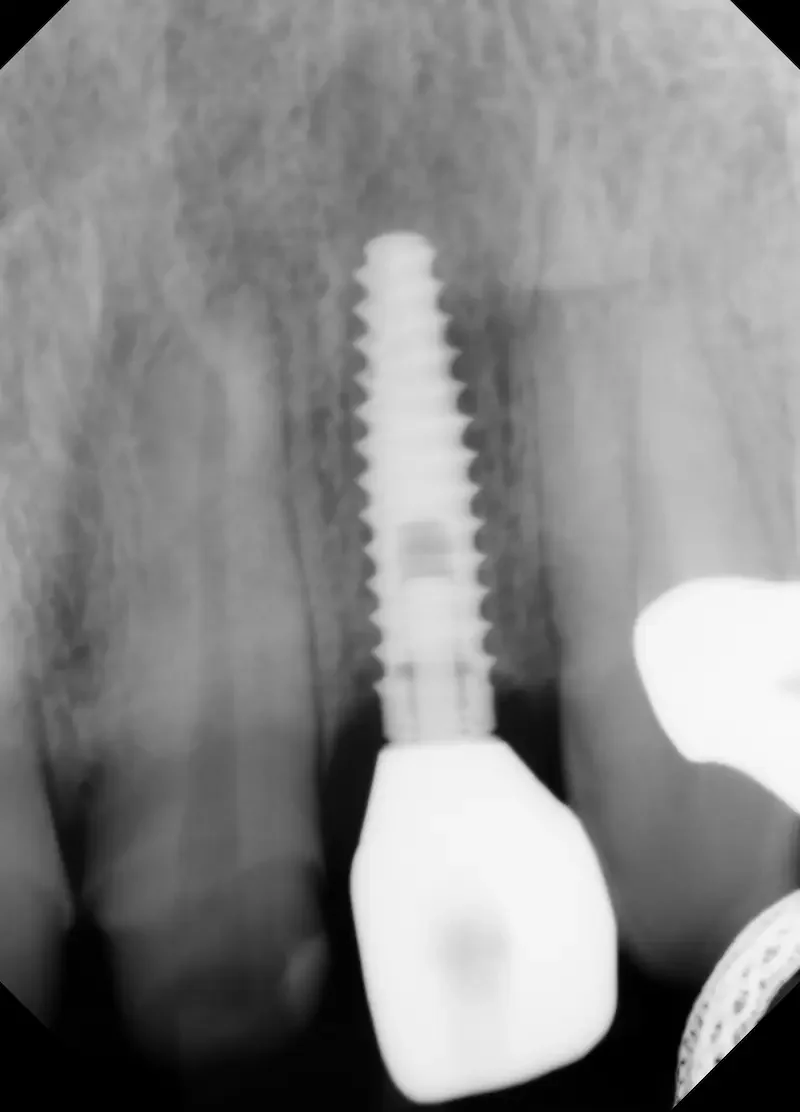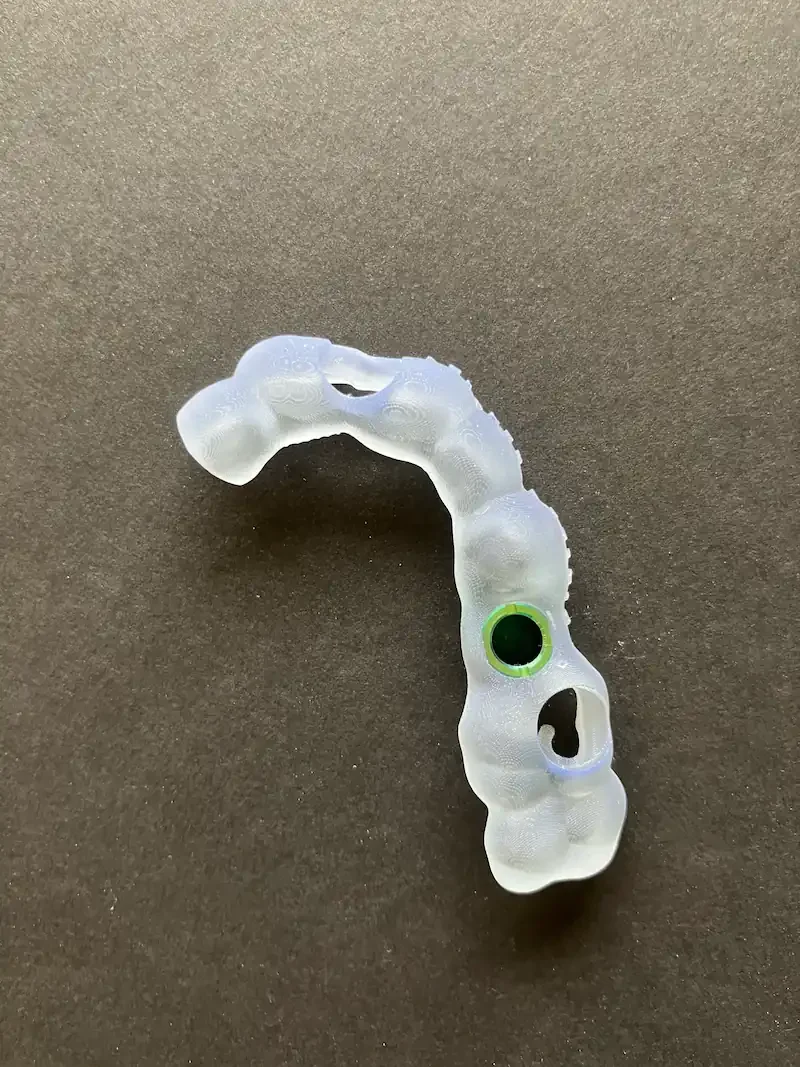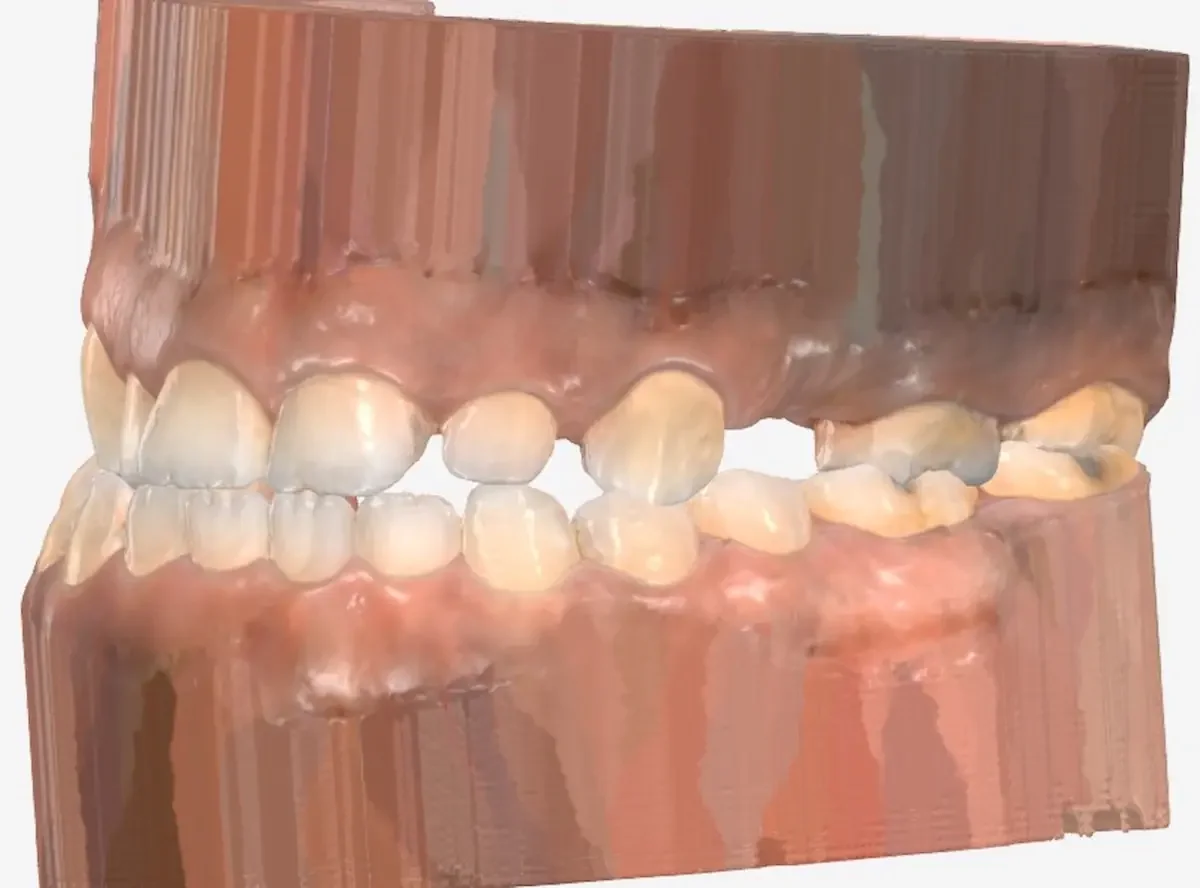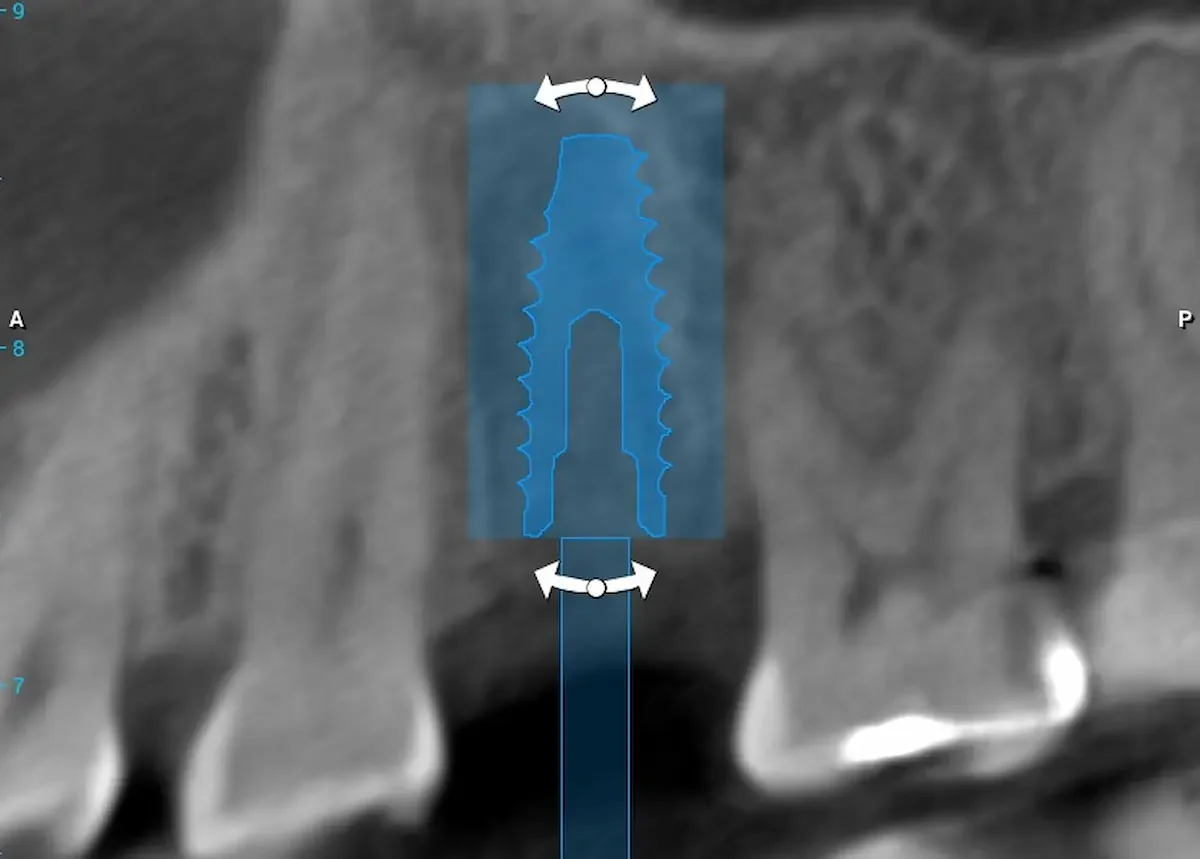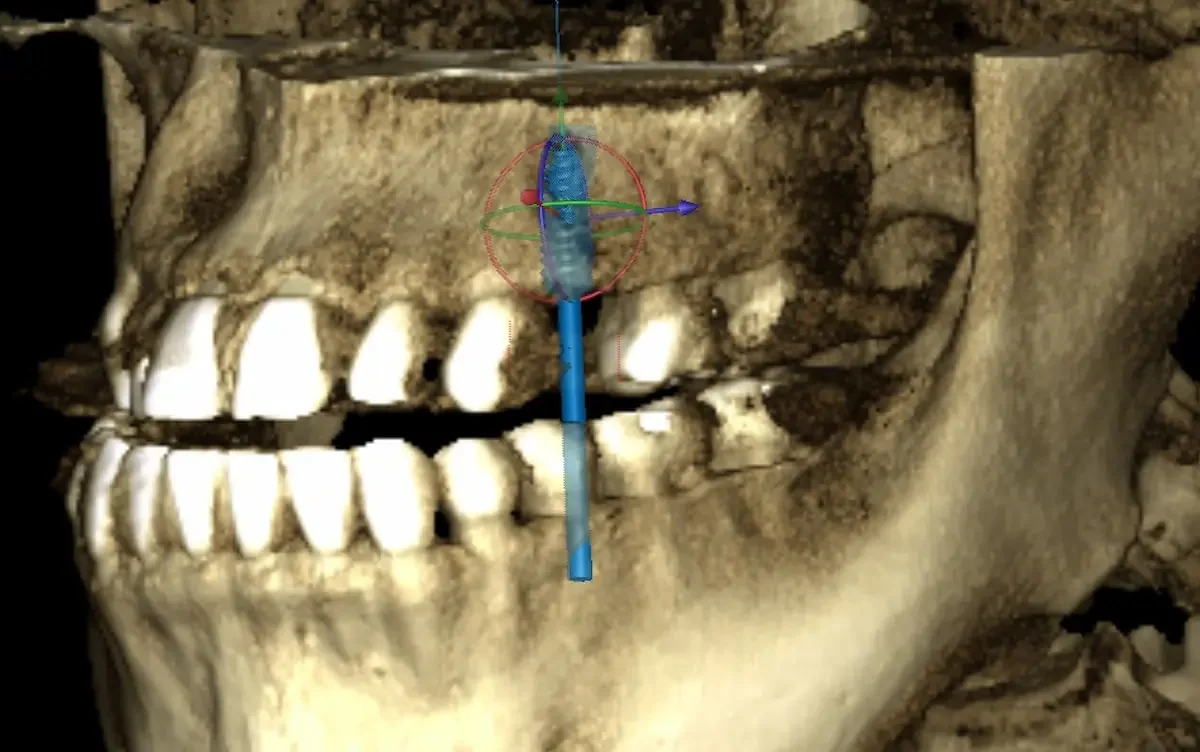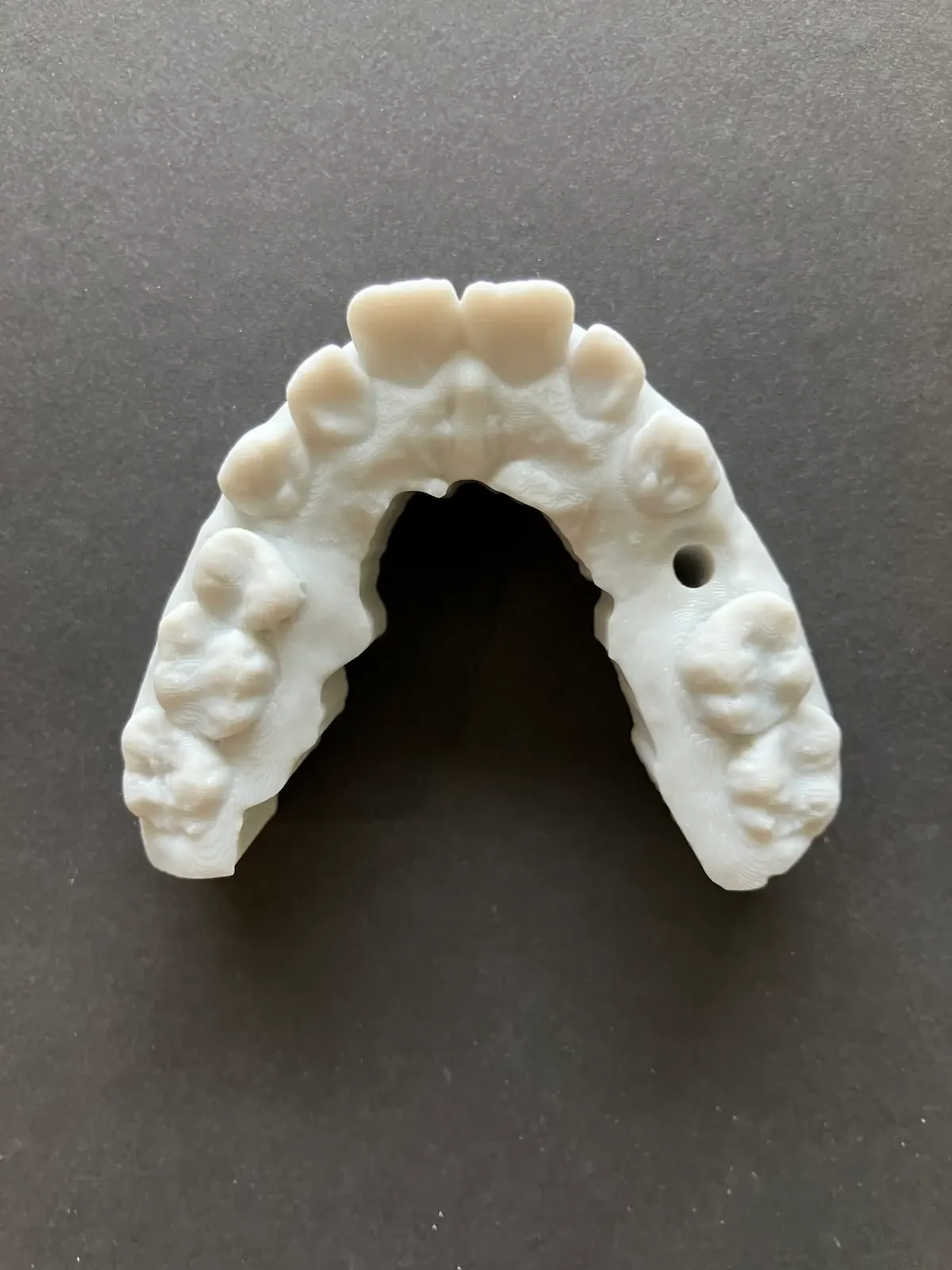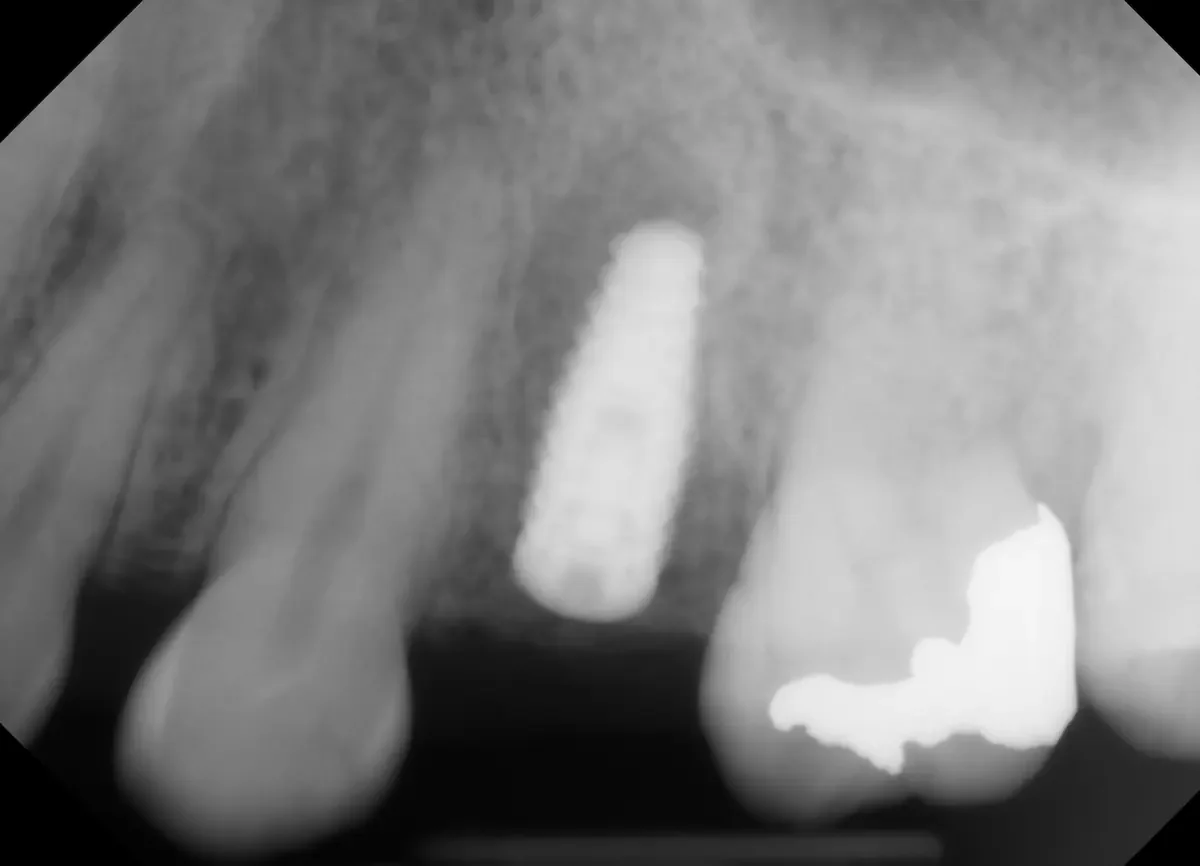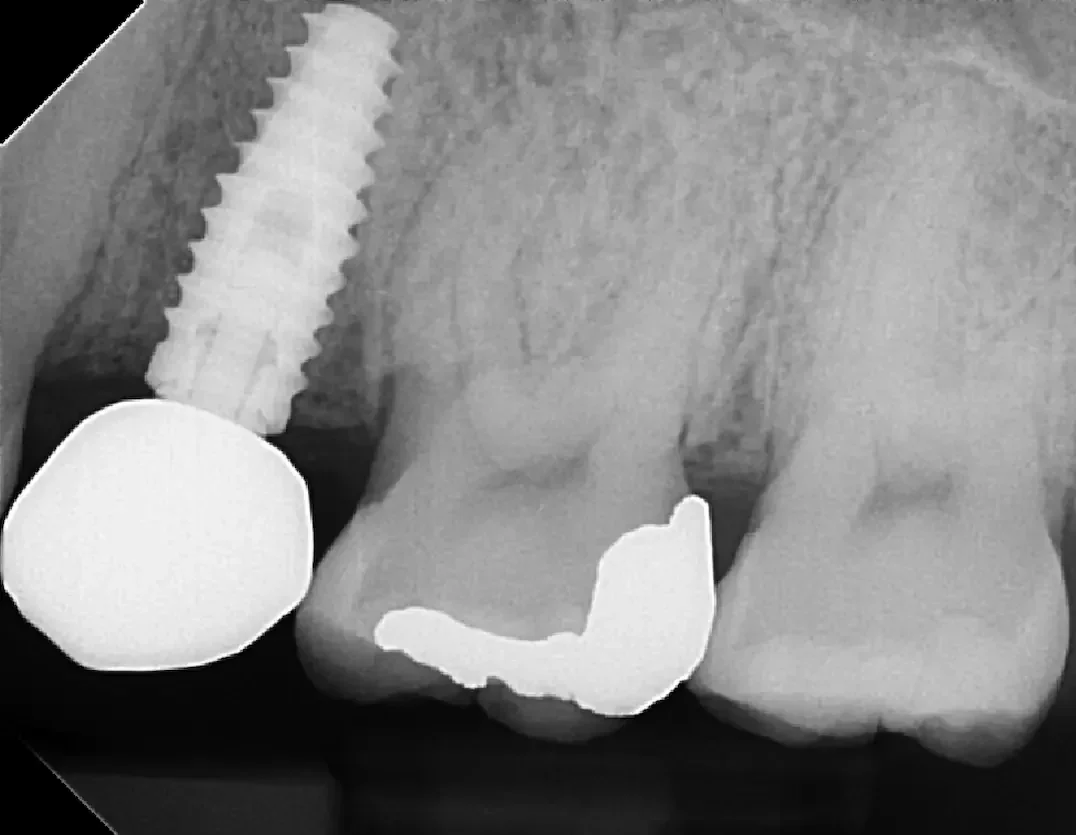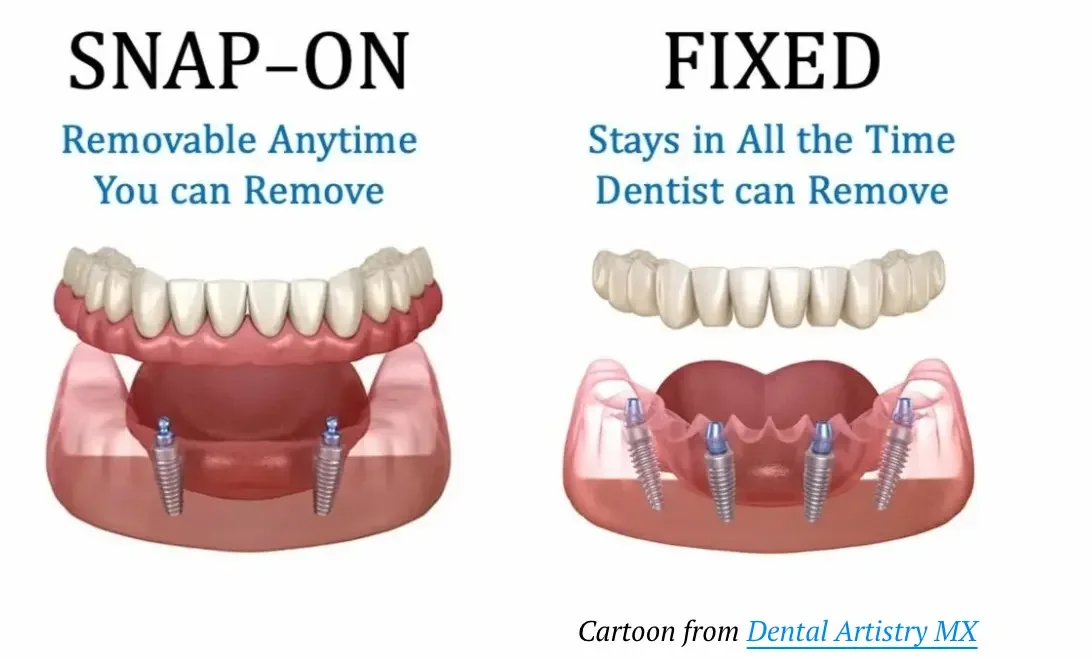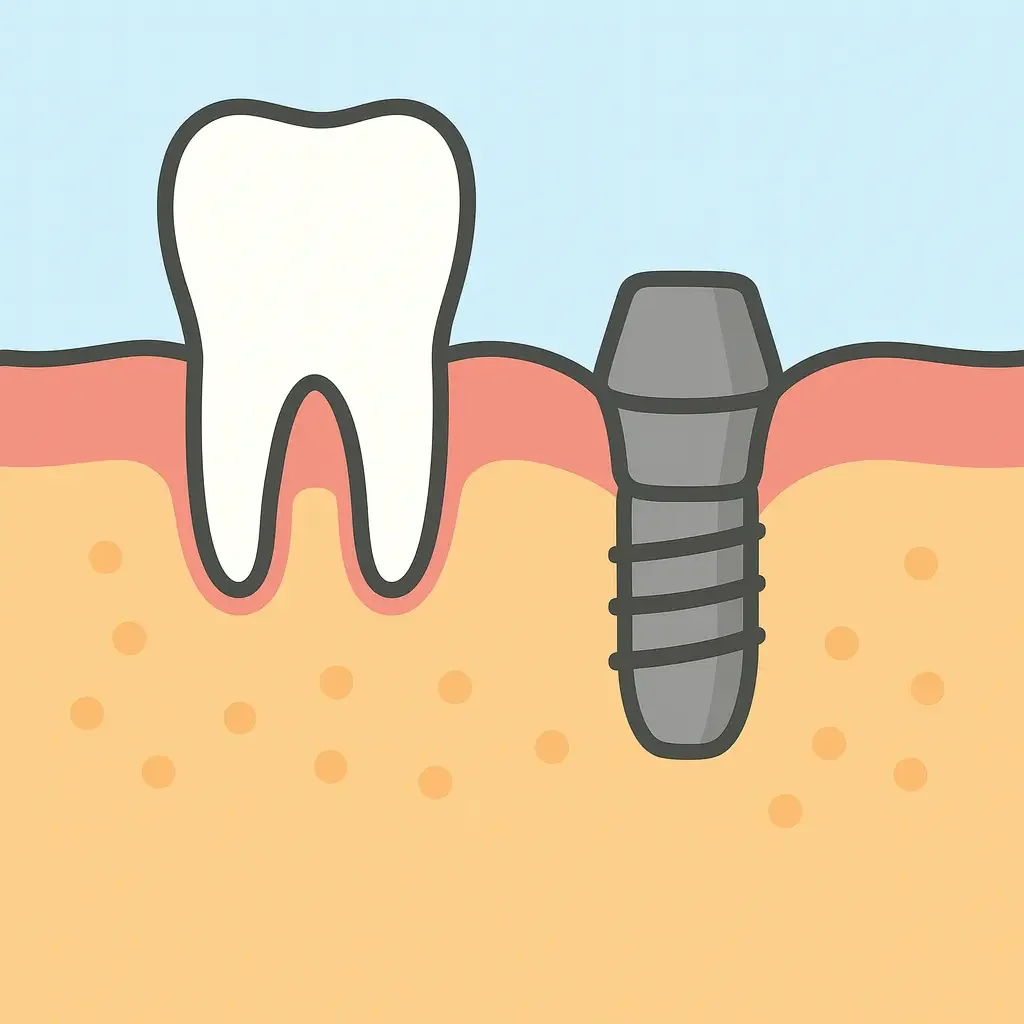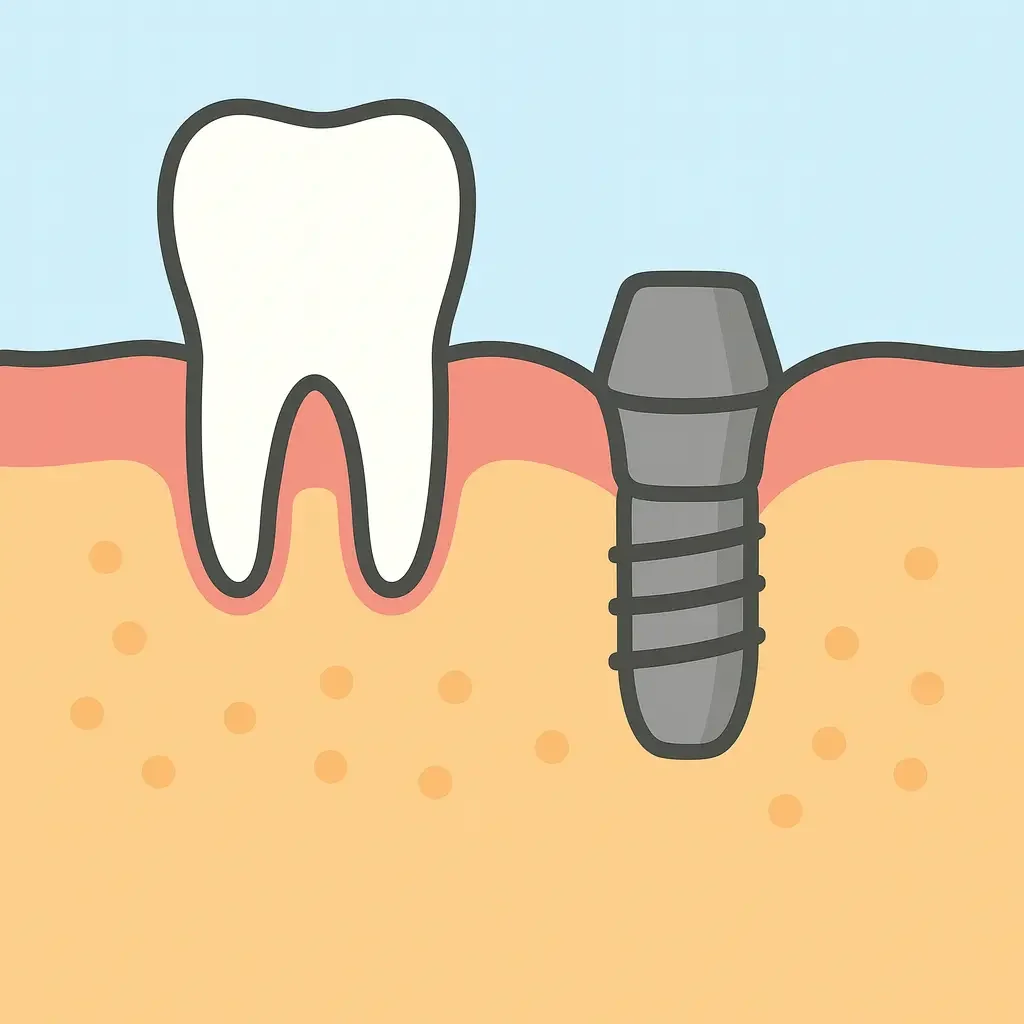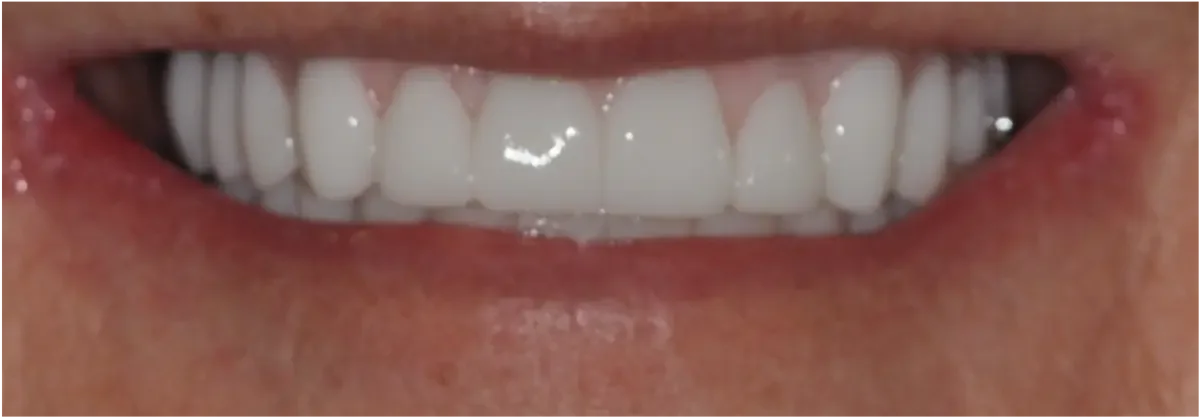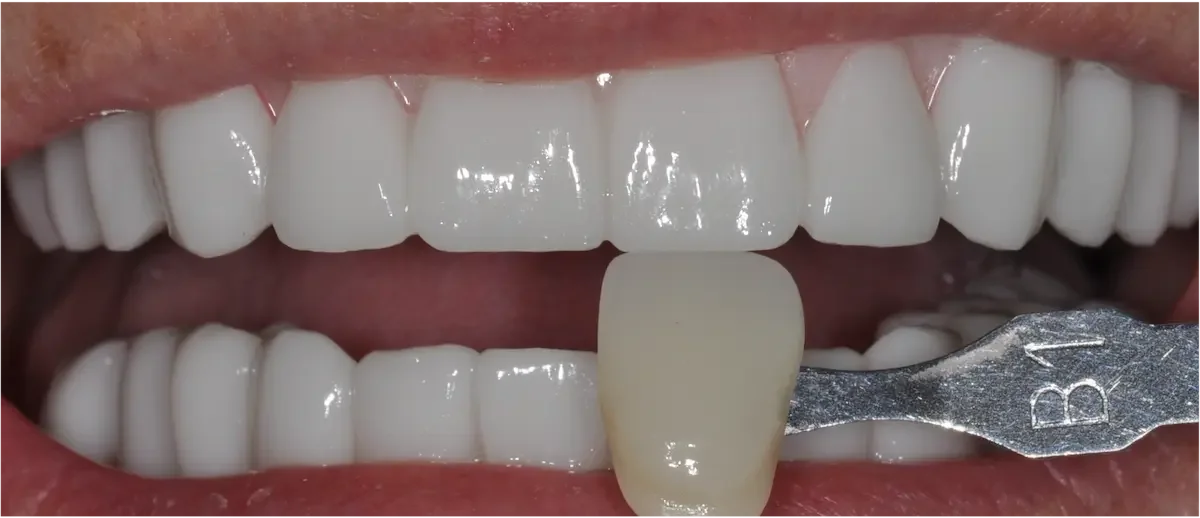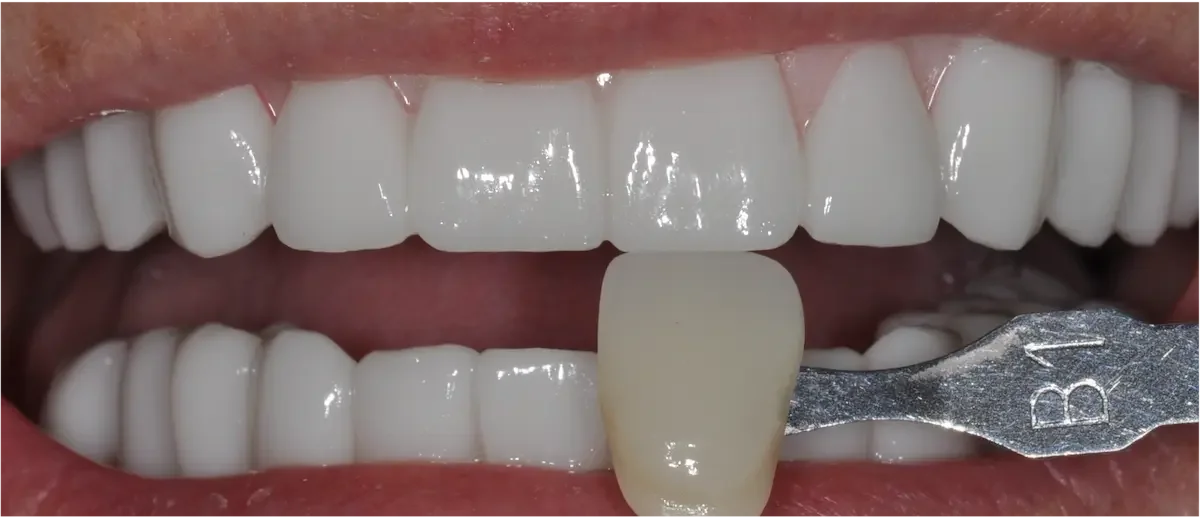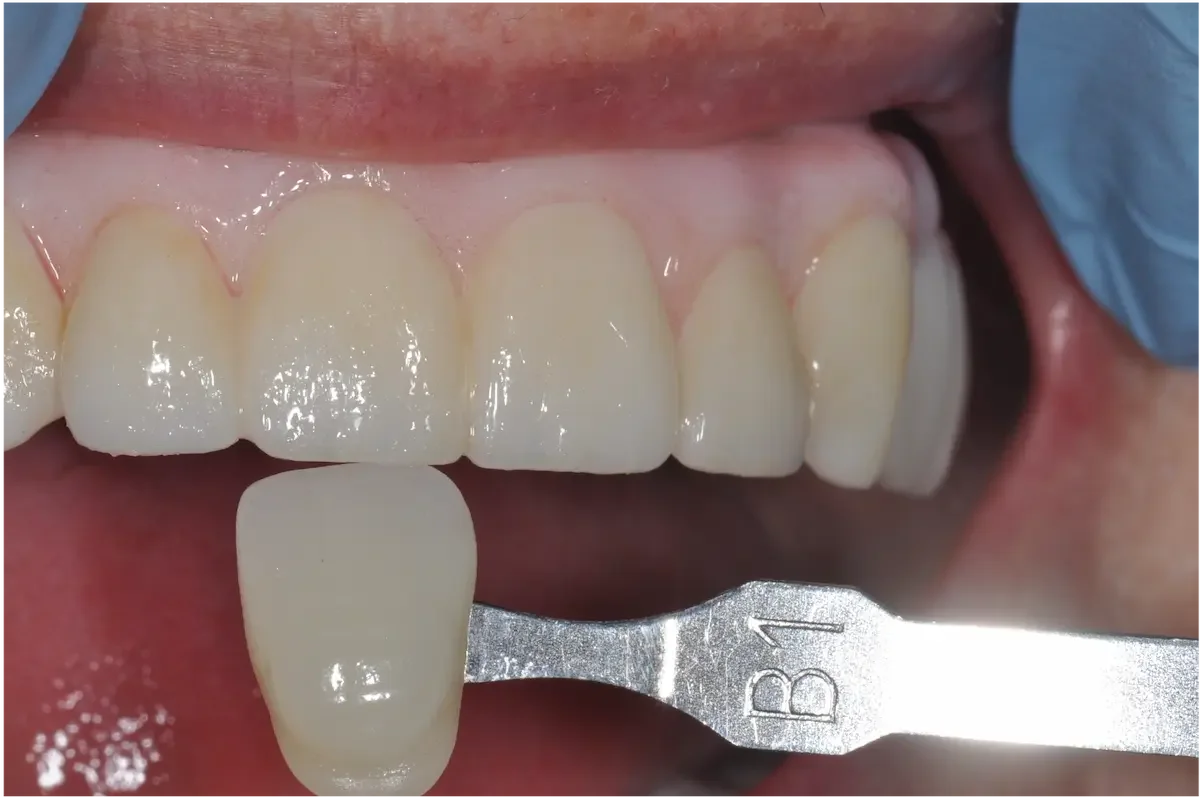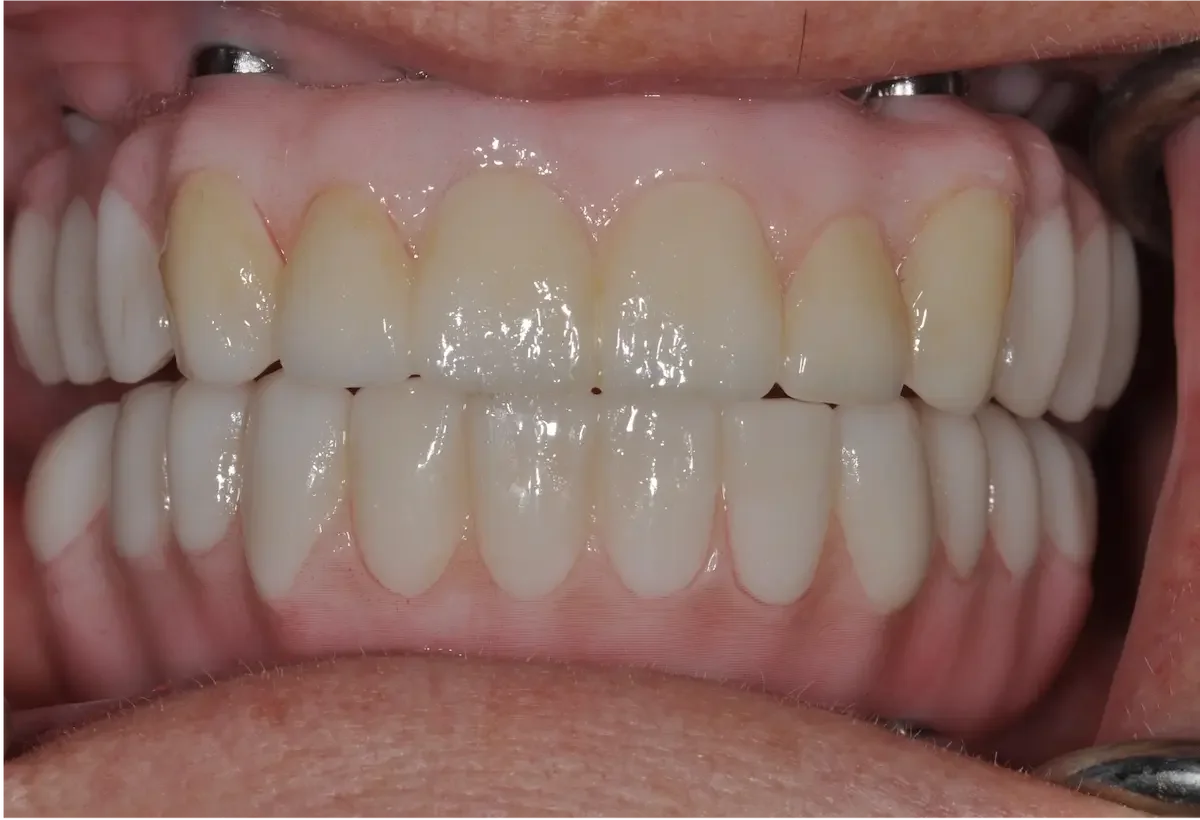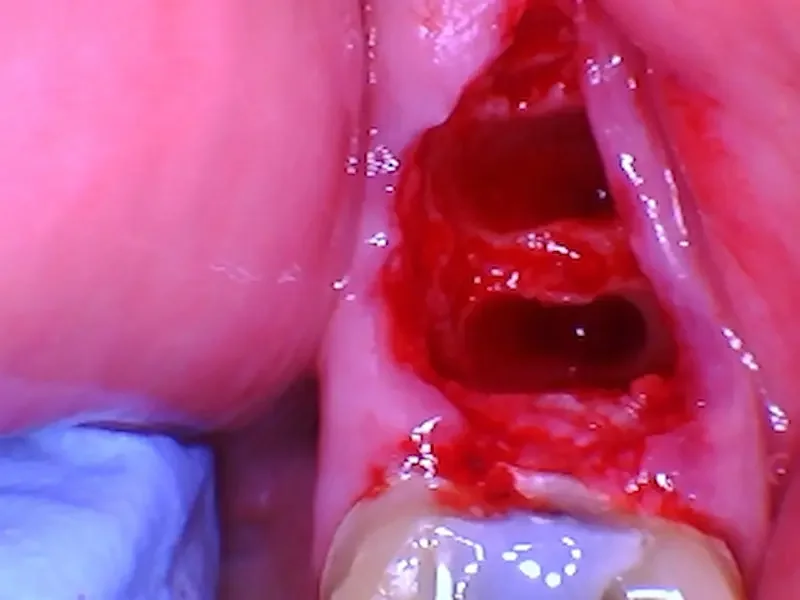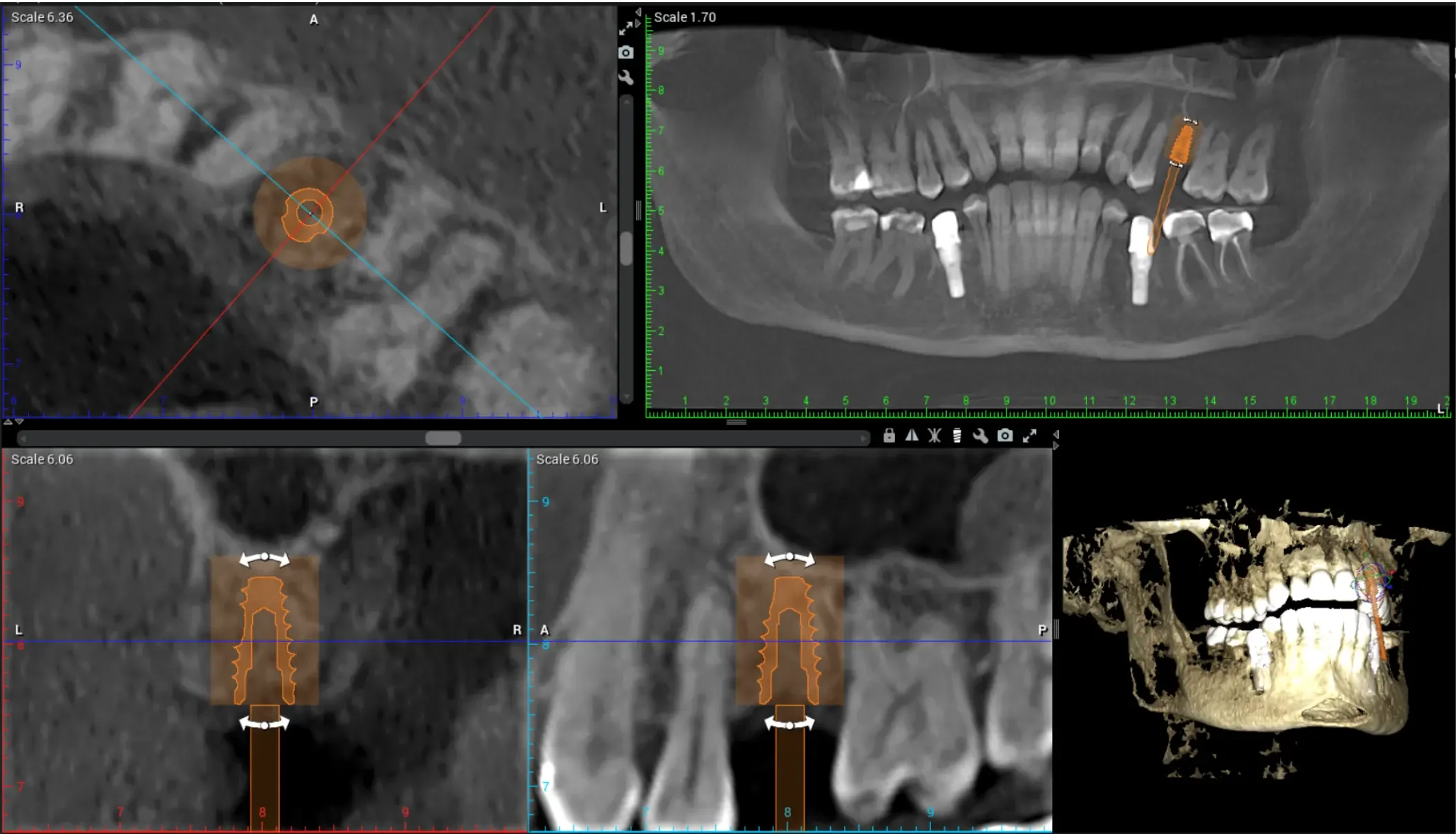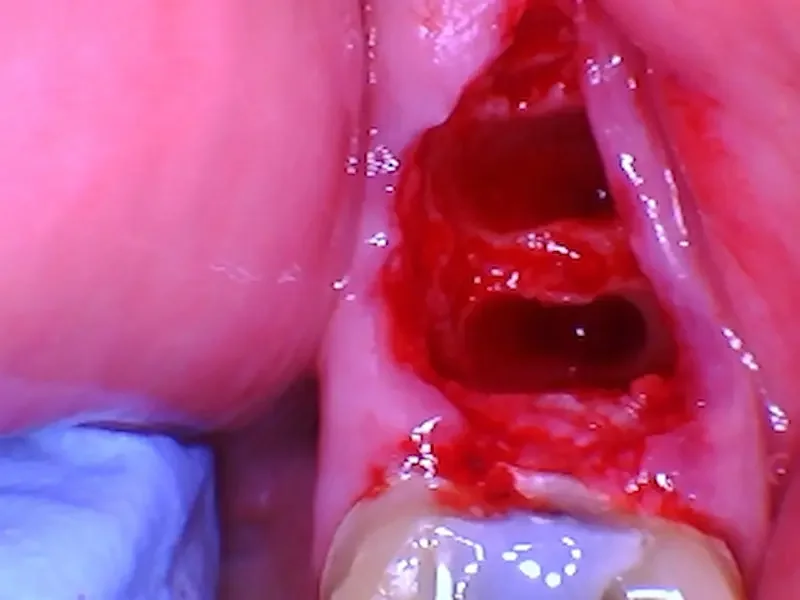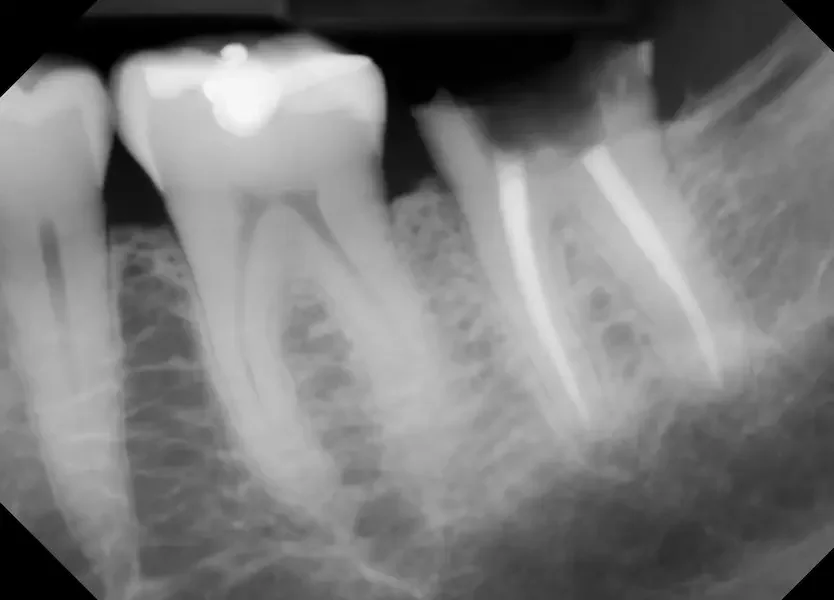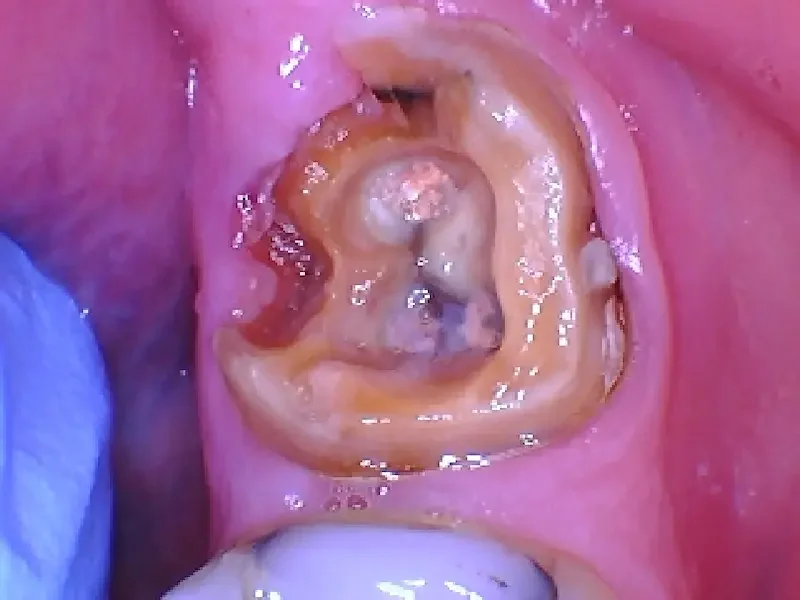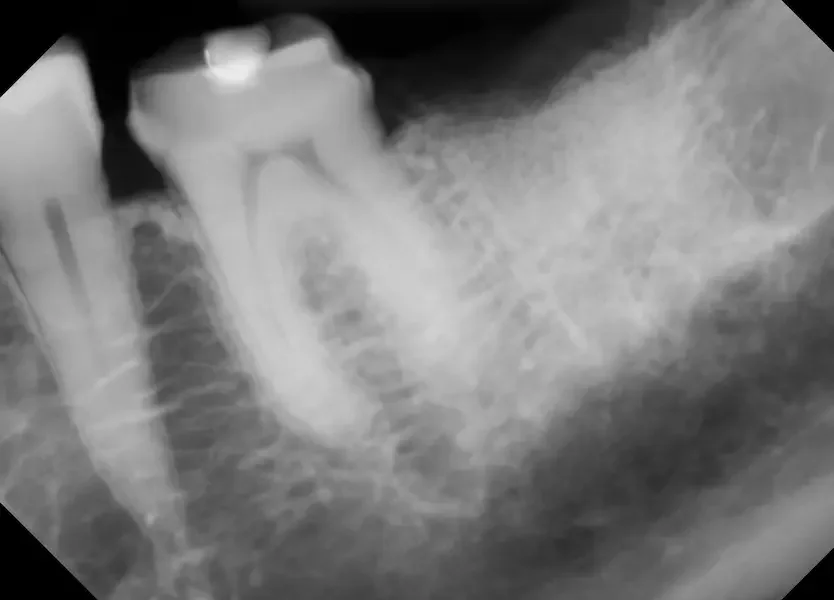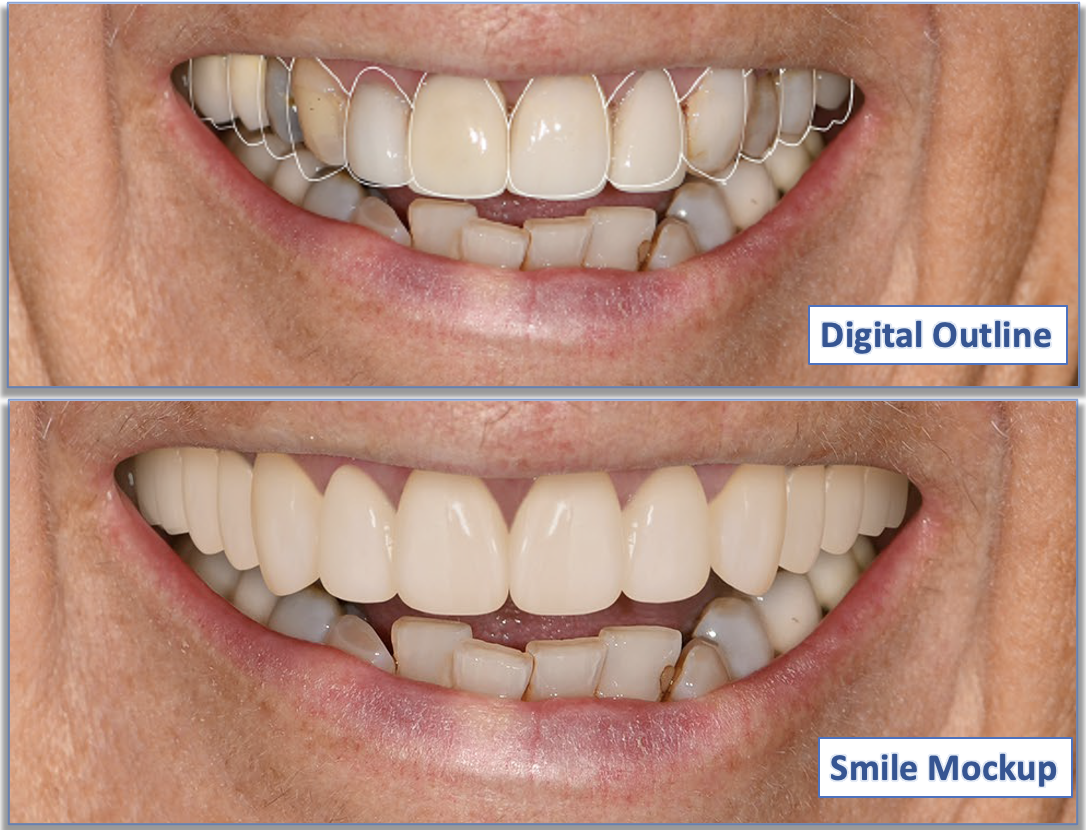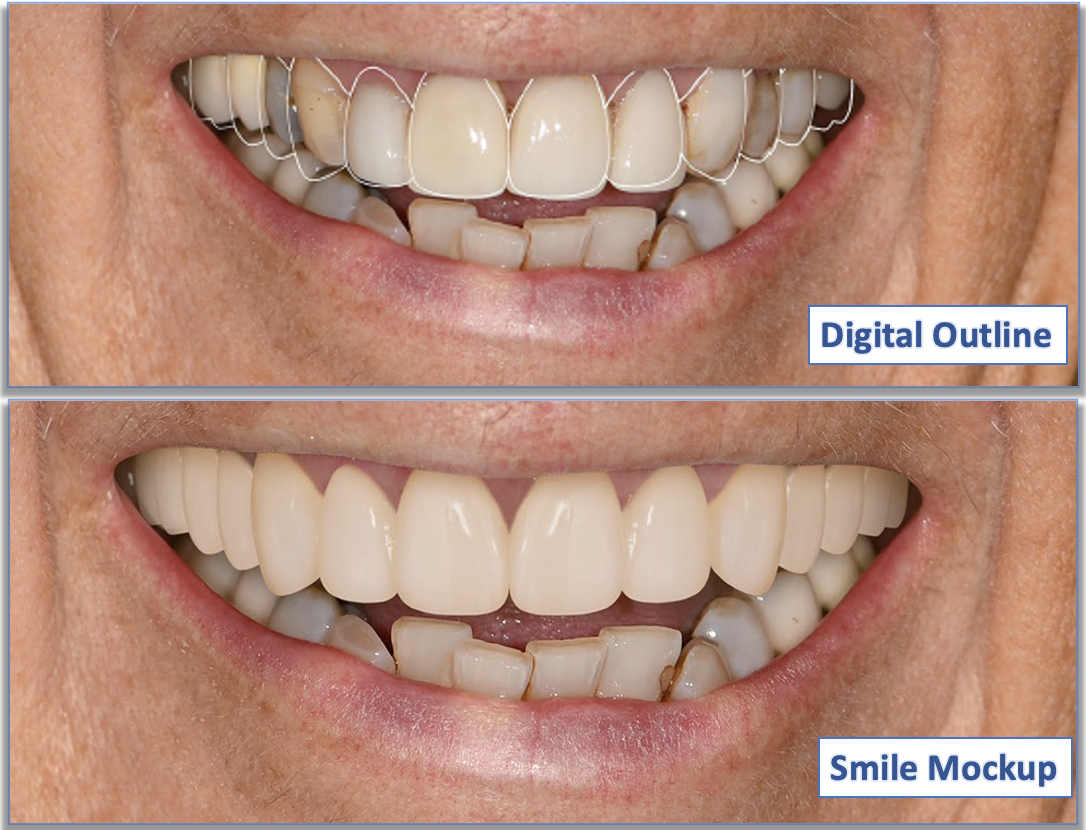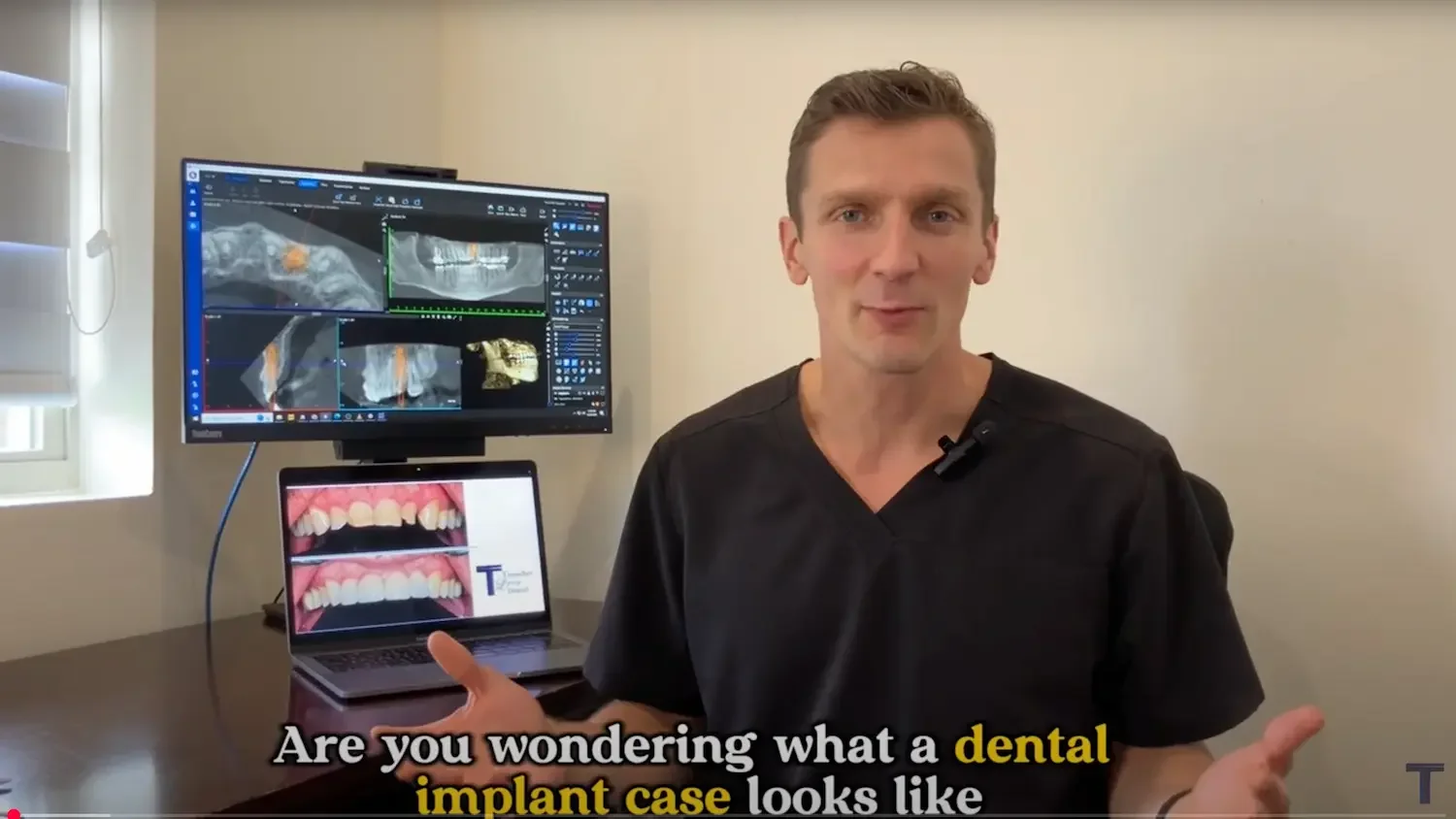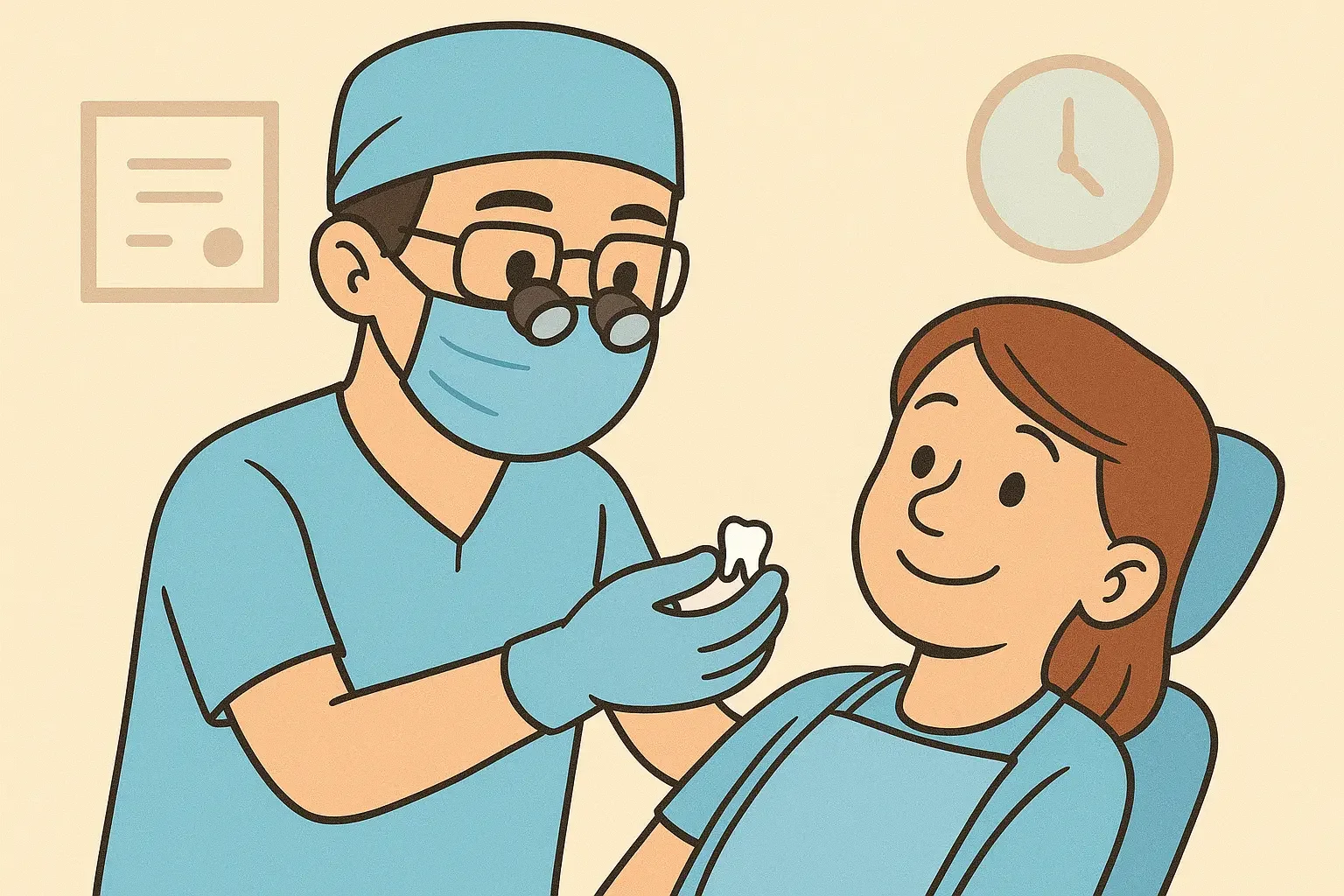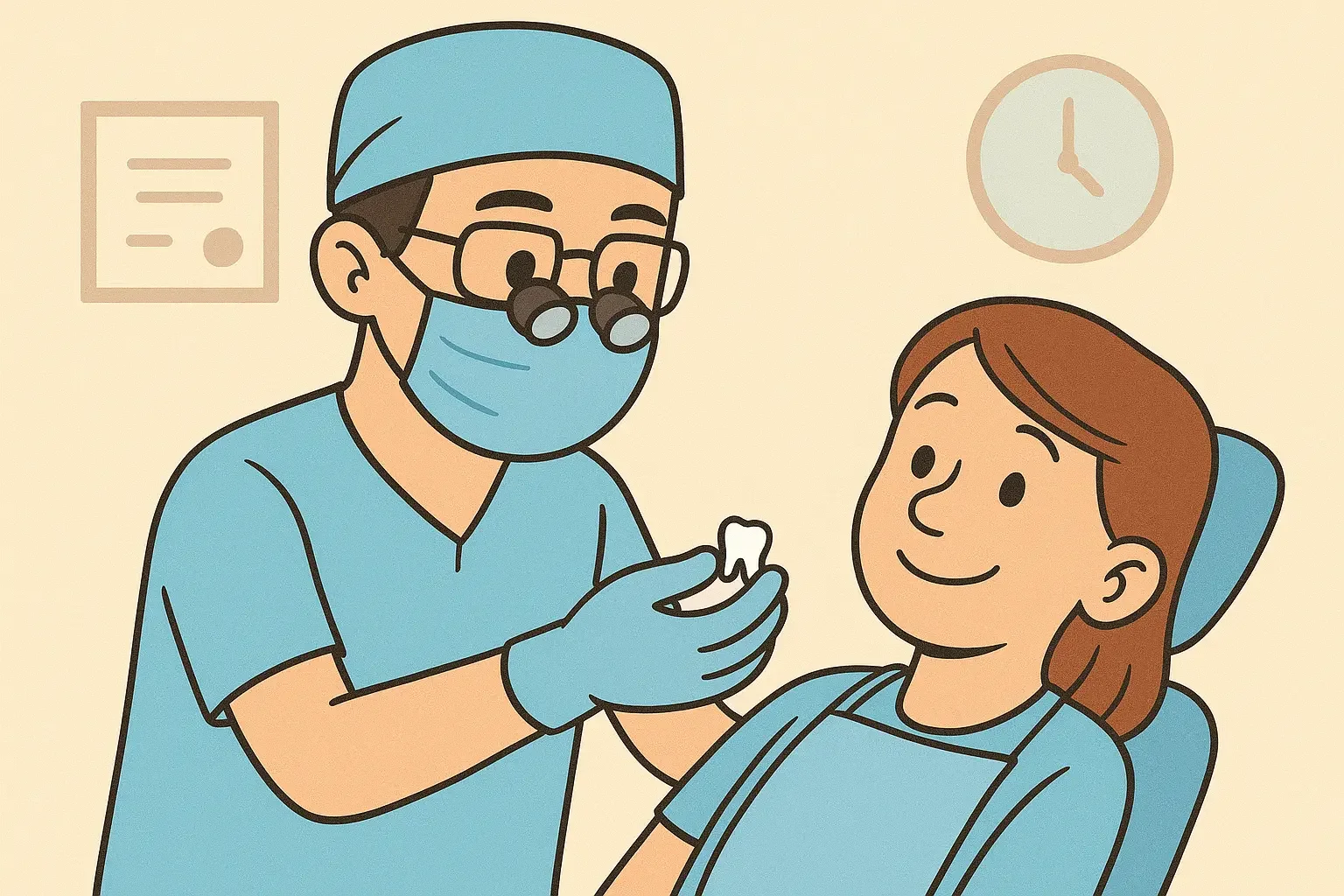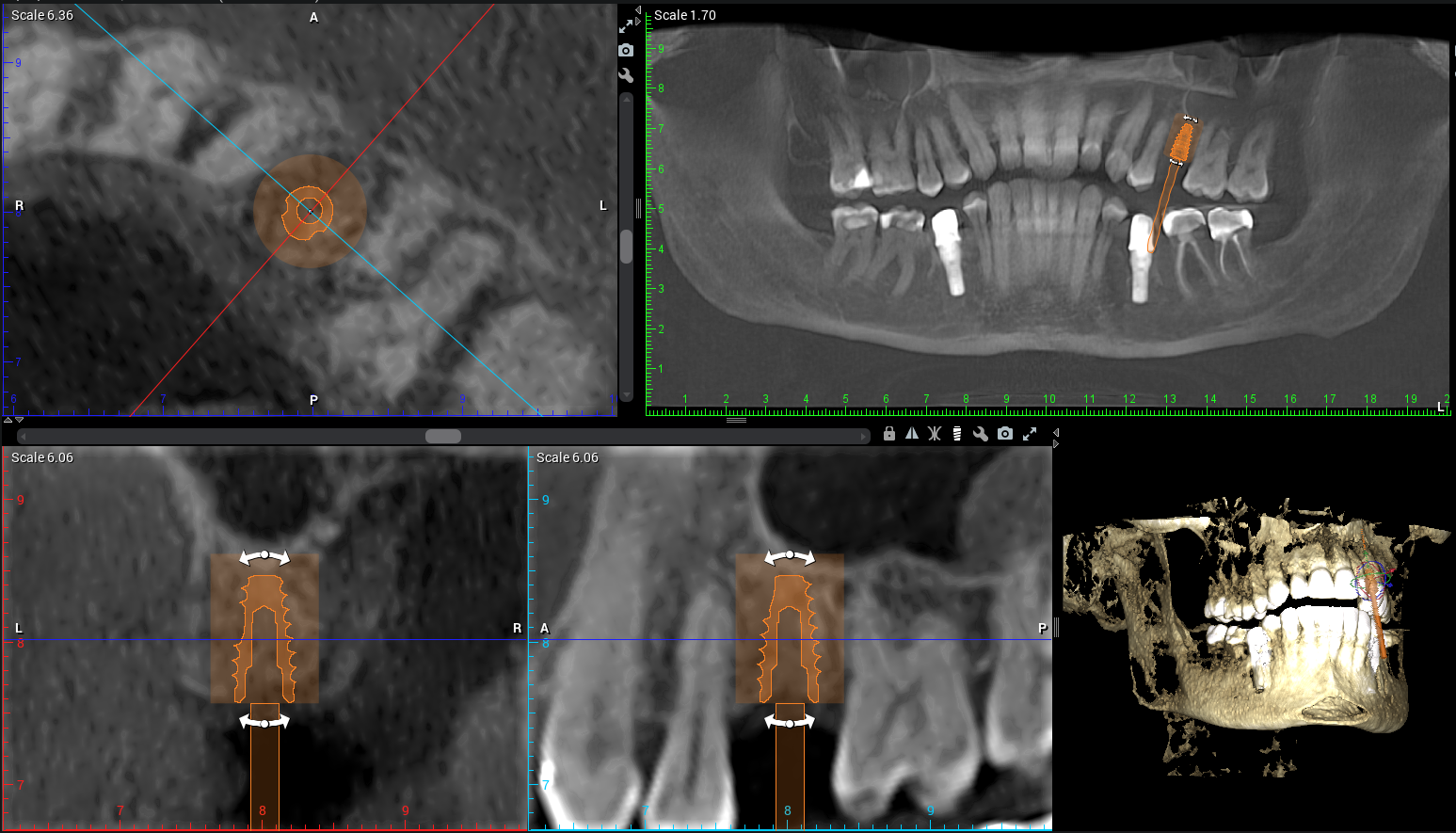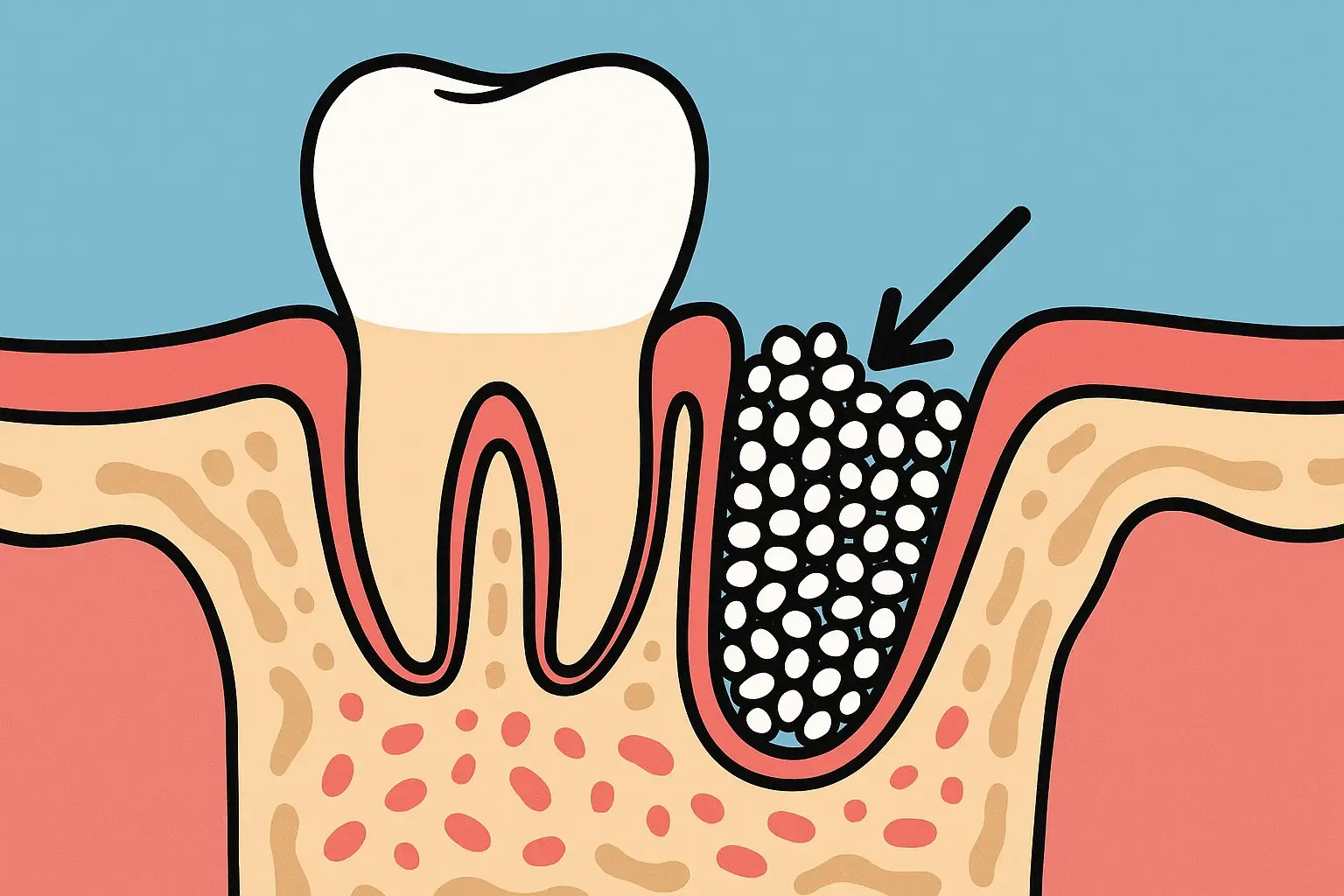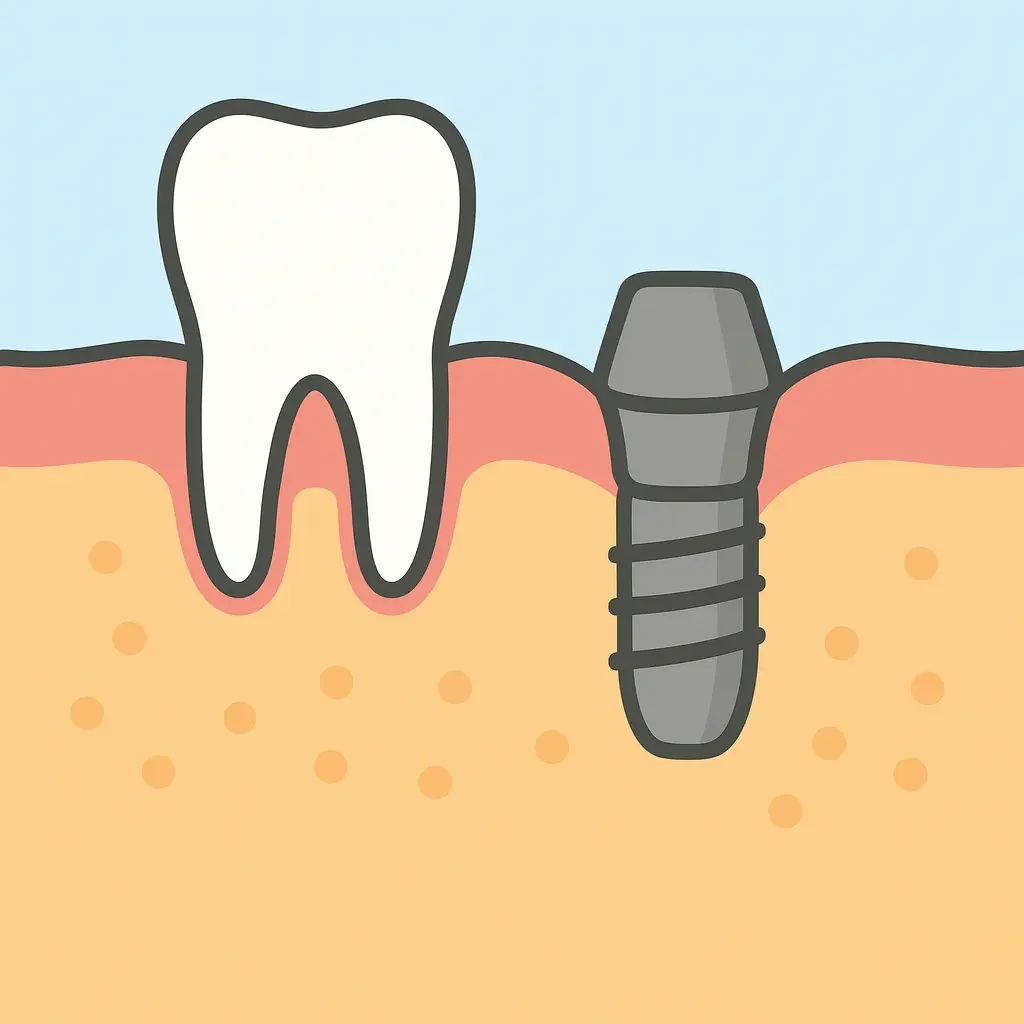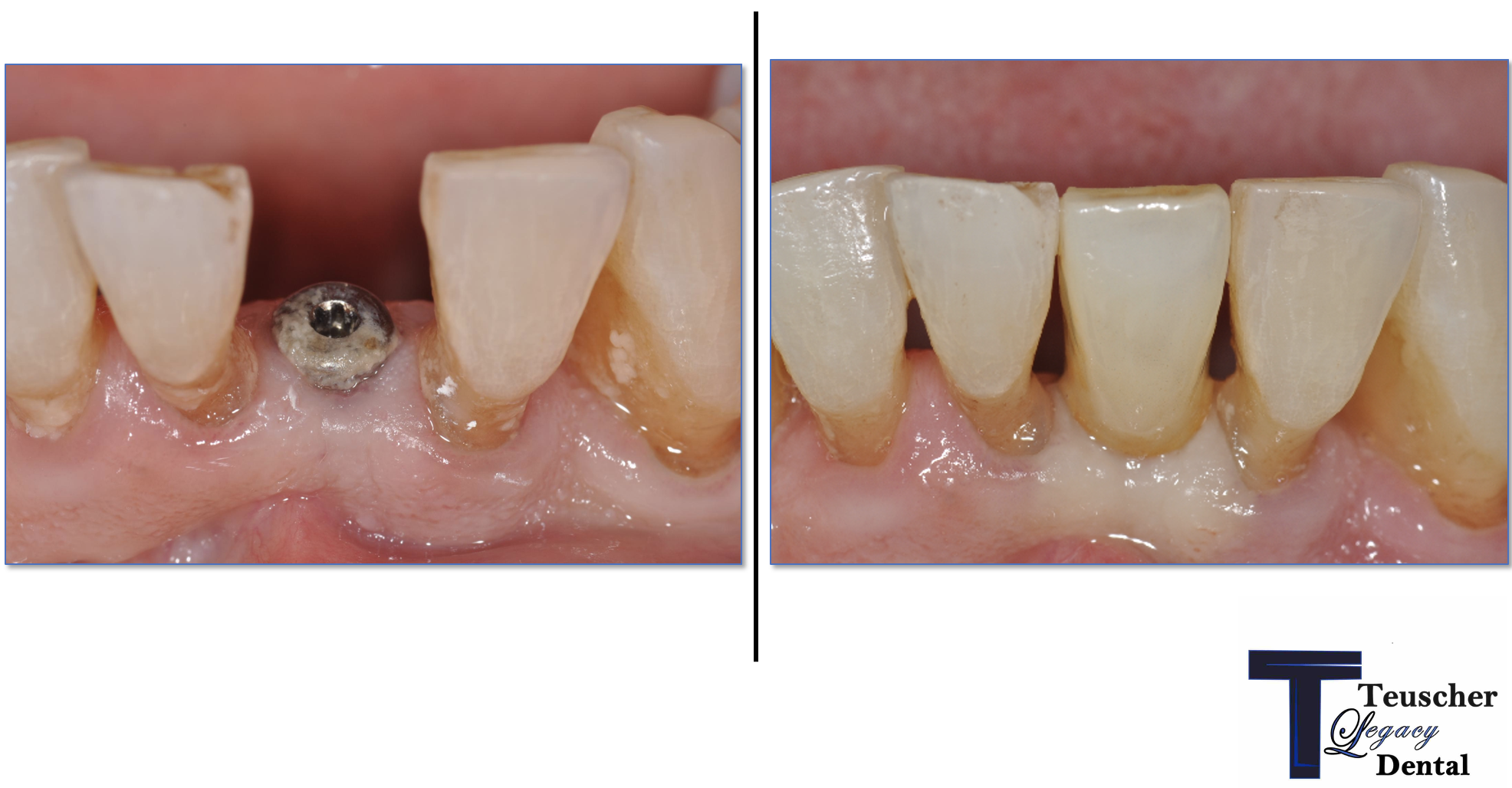
Blog
Useful and free info on dental implants, cosmetic dentistry, family dentistry, and more. All posts written by our doctors, not AI or some outside marketing firm. If you are in Campton Hills, St Charles, Geneva, Batavia, Elburn, Elgin, or anywhere in Kane County, these posts will be helpful!
The Truth About Same-Day Extractions and Implants in St. Charles
Everyone loves the idea of walking in with a broken tooth and walking out with a dental implant the same day. It sounds efficient, high-tech, and convenient — and sometimes, it really is.
But here’s the truth most people never hear:
same-day dental implants are a phenomenal option in the right situation… and a costly mistake in the wrong one.
At Teuscher Legacy Dental in St. Charles, IL, we place and restore dental implants every week — including immediate-placement (“same-day”) cases. The key is knowing when it’s the smart move and when patience leads to better long-term success.
What “Same-Day” Actually Means
“Same-day dental implants” (also called immediate implant placement) means the implant is placed at the same appointment as the tooth extraction.
Sometimes a temporary crown or healing cap is attached right away, giving you the appearance of a new tooth while the implant integrates beneath the surface.
That’s very different from “same-day final teeth.” True final restorations still require a healing period — usually several months — for the bone to bond securely to the implant.
So the real question isn’t “Can you place an implant right away?”
It’s “Will that implant heal predictably and last decades?”
Before Extraction
After Extraction, Same Day Implant in root socket
Picture of same day implant and healing cap sticking out of gums
X Ray of final crown over immediate dental implant
✅ When It’s a Genius Move
Same-day implant placement works beautifully when a few key conditions are met:
Healthy bone surrounds the tooth being extracted
No active infection in the gums or bone
Thick, healthy gum tissue for stability and aesthetics
Excellent primary stability (the implant locks in firmly)
Precise digital planning — guided by 3D CBCT imaging
Here’s an example from one of our recent cases (see images above!):
A patient had a broken down front tooth. Because the surrounding bone and gums were perfectly healthy, we used a fully guided surgical approach to remove the tooth and place an implant in the same visit. The patient left with a custom temporary that looked completely natural — and never had to go a single day without a smile. Dr Brayden Teuscher did a much more thorough case breakdown here.
That’s when same-day is a genius move.
❌ When It’s Not Worth the Risk
Not every extraction site is ready for an implant right away. In some cases, placing too soon can actually set you back — leading to bone loss, infection, or implant failure.
We don’t recommend same-day placement when:
There’s infection or abscess near the root
The bone is too thin or fragile to stabilize an implant
Gum tissue is receding or damaged
Sometimes if you smoke or have uncontrolled diabetes
Could an implant technically go in that day? Maybe.
Should it? No.
At Teuscher Legacy Dental, our primary goal isn’t usually to get the implant done fast — it’s to do it right. If we need to rebuild the bone first, that extra healing time protects your long-term success. Of course, we’d go over risks and benefits of each option, because it’s not always black and white!
Why Planning Beats Speed Every Time
Speed means nothing without stability. That’s why we rely on:
3D CBCT imaging to evaluate bone in every dimension
Digital surgical guides for perfect placement
In-house implant surgery and restoration, so every phase aligns under one plan
When you’re working with a team that performs extractions, bone grafts, and implant restorations under one roof, like we do at Teuscher Legacy Dental, every decision serves the long game — not just the quick win.
We can still streamline care when the conditions are right, but never at the expense of the implant’s lifespan.
What to Expect: Cost, Healing & Comfort
In most cases, same-day dental implants cost about the same as traditional implants. The difference mostly lies in timing, not price.
Healing time: Soft tissue typically heals in 2–3 weeks; bone integration takes 3–6 months.
Comfort: With modern anesthesia and guided precision, most patients report less discomfort than expected.
Aesthetics: You’ll often leave with a temporary tooth that looks natural while healing.
When planning correctly, the process is efficient and predictable — not rushed.
Honest Answers to Common Questions
Are same-day implants safe?
Yes — in healthy, well-planned cases. The risk rises when infection or bone loss is ignored.
How long do same-day implants last?
With proper planning and maintenance, the longevity is identical to traditional implants: decades of function and confidence.
Do they hurt more than regular implants?
Not at all. In many cases, recovery feels even easier because we minimize surgical steps and trauma.
The Bottom Line
Same-day dental implants can be a great tool and shorten dental implant timelines! But not if corners are cut.
When the foundation is healthy, they save time and preserve bone. When it’s compromised, waiting — and rebuilding — is the wiser move.
At Teuscher Legacy Dental, our philosophy is simple:
We plan for forever, not just for fast.
But when we can achieve predicatble, long term results with an immediate dental implant, that’s awesome!
If you’ve recently lost a tooth or are facing an extraction, schedule a 3D implant consultation with our team. We’ll show you exactly what your bone looks like, whether same-day placement is possible, and what path gives you the best long-term result.
Teuscher Legacy Dental
40W131 Campton Crossings Dr, St. Charles, IL 60175
📞 (630) 762-0000 | teuscherdental.com
Award-Winning Cosmetic & Implant Dentistry in St. Charles IL
Why Your Teeth Are More Sensitive In Winter
Ever notice your teeth ache when you step outside on a cold day? In this short video, Dr. Brayden Teuscher explains why: breathing cold air through your mouth can chill the teeth and irritate tiny nerve endings inside them.
Cold, dry air can also inflame the sinuses, which press against upper tooth roots and make them feel sore—even if there’s nothing wrong with the teeth themselves. Especially if you have a mild illness or COVID.
If you deal with seasonal tooth sensitivity, try breathing through your nose, using a soft-bristled brush, and scheduling a check-up to rule out enamel wear or gum recession.
Watch below for a quick explanation and simple ways to protect your teeth this winter. See You Soon!
Confidence Restored with Same-Day Full Arch Implant Rehabilitation
Meet one of our real patients: A professional who came to us with failing upper teeth, frequent discomfort, and a mounting hesitation in business settings because of his smile. His case is featured on another blog post: full arch implants explained. On a single transformative day, he underwent full-mouth extraction of the upper arch and immediate placement of a fixed-on-implants prosthetic (“same-day teeth”) using the advanced arch-restoration protocol commonly referred to as “All‑on‑X”. The lower jaw is up next, completing the full-mouth rehabilitation journey.
What happened
Extraction of all remaining upper teeth in one surgical visit.
Placement of multiple implants in the upper arch, angled & planned for optimal support and immediate loading.
Attachment of a fixed provisional full-arch prosthesis the next day (less than 24 hours later), enabling immediate function and aesthetics.
Detailed surgical and prosthetic planning, digital workflows, and coordination to deliver same-day outcomes with strong functional and cosmetic results.
(For background on how full-arch implant rehabilitation works and the key benefits, see another full case breakdown here.)
Why it matters
Function: The patient regained chewing ability and speech confidence almost immediately, rather than waiting months for healing and final prosthetics. Full-arch fixed implants offer a vastly more stable bite compared to removable dentures.
Aesthetics: Missing, decayed, or failing teeth can undermine a person’s professional presence and self-image. By restoring a full fixed smile, this patient no longer hides his teeth when speaking, presenting, or engaging in meetings.
Psychology & business impact: Confidence in appearance translates into presence in business settings. Our patient noted that after the procedure, he walked into his next client meeting without self-consciousness about his smile. This kind of outcome is especially meaningful when your work requires communication, leadership, or public interaction.
Efficiency: By doing the upper arch and same-day loading, we streamlined the treatment experience. Patient downtime, inconvenience, and emotional burden are reduced when the process is efficient and predictable.
Looking ahead
The lower jaw phase is scheduled and will complete his full-mouth fixed restoration. Post-care will include:
Monitoring implant integration and prosthetic fit.
Hygiene and maintenance of the fixed prosthesis (cleaning under the bar, proper recall).
Long-term support for the restoration’s success and the patient’s overall oral health.
It’s critical to point out that while these full-arch fixed solutions are life-changing when done appropriately, patient selection, proper planning, skilled surgical and prosthetic execution, and maintenance are all vital. Some warnings exist in the literature about over-aggressive extraction and blanket promotion of full-arch implants when less-invasive or preservative options may suffice.
Want to learn about your options?
Schedule a Free Consultation with our Expert Team!
2 Veneers → A Wedding-Ready Smile! (Fast Cosmetic Fix Before the Big Day)
Sometimes the biggest transformations come from the smallest, most strategic changes.
Sally came to us hoping for a brighter, more confident smile before her upcoming wedding — but her timeline was tight. Instead of recommending a full cosmetic overhaul, we focused on what would make the biggest impact quickly: two carefully crafted porcelain veneers.
These veneers restored balance, symmetry, and brightness to her smile without aggressive treatment or multiple lengthy appointments. The result? A natural, wedding-worthy smile that photographed beautifully and felt completely like her.
If you’re considering cosmetic dentistry — whether for a wedding, graduation, or simply because you’re ready for a change — you’d be surprised what a small number of well-designed veneers can do.
Ready to explore your own options?
👉 Book a free cosmetic consultation
A Broken Tooth Solved! Cosmetic Dentistry Explained
When you break a tooth and need a quick, (but beautiful and cosmetic!) fix, what do you do?
See Teuscher Legacy Dental of course!
This patient had a broken tooth and adjacent tooth that was cracked and too yellow. We used advanced, minimally invasive techniques to improve the color and strengthen the teeth in a way that will last. Our patient was thrilled!
Get more detail in the video above.
If you have a similar need for cosmetic dental work, see us for a FREE CONSULT!
What Are Surgical Guides for Dental Implants — How They’re Made and Used (Real Photos!)
Learn how 3D surgical guides help your implant be placed with pinpoint accuracy. See how Teuscher Legacy Dental plans, prints, and uses them.
What is a Surgical Guide?
A surgical guide is a custom-made template that fits precisely over your teeth or gums during implant surgery.
Think of it like a roadmap — it shows the exact position, depth, and angle where each dental implant should go.
Dr Brayden shows what a dental implant surgical guide is in this video
Instead of relying only on visual landmarks or freehand placement, the guide ensures your implant goes exactly where it was digitally planned using your 3D scans.
How a Surgical Guide Is Made
At Teuscher Legacy Dental, each guide is made in-house from your Medit digital scan and CBCT 3D X-ray.
Here’s how the process works step-by-step:
1️⃣ Digital Impression (Medit Scan)
3D digital impression of top teeth to make surgical guide for dental implant
3D digital impression of bite to plan precise bite relationship for final crown BEFORE any implant work is done.
We take a detailed 3D surface scan of your teeth and gums. We have two Medit brand intra-oral scanners at our office. They dont gag you like traditional impression material will!
2️⃣ 3D Bone Scan (CBCT) and Virtual Implant Planning
Your CBCT scan shows the underlying bone volume, nerves, and sinus anatomy.
We plan in more detail where the final tooth will go, and the angle the implant needs to be placed. This data is merged with your Medit 3D intra-oral scan inside our implant planning software. This data is used to 3D print the tooth model and surgical guide below.
3️⃣ Guide Design & 3D Printing
3D printed model of the patient’s upper arch, showing where the implant will be placed
Green metal sleeve only allows the drill to enter bone in one specific direction. This direction is the exact place we decided in the planning phase.
Once the implant and crown plan is approved in the planning software, the surgical guide is designed with metal sleeves to control the drill’s exact path. The file is printed on a dental 3D printer using biocompatible resin and disinfected before surgery.
How the Surgical Guide Is Used During Surgery
On the day of surgery, the guide is seated snugly on your teeth or gums, just like on the initial model.
Each drill step passes through the guide sleeve, keeping your implant trajectory perfectly aligned with the digital plan.
This means:
✅ Smaller incisions and less swelling
✅ Shorter surgery time
✅ Faster recovery
✅ A precisely restored bite that matches your smile design
For patients, this translates to more predictable results and a smoother overall experience.
Perfect implant position on surgery day - due to precise planning.
A beautiful final crown that fits perfectly into the patient’s bite - just like we planned.
Why Precision Matters at Teuscher Legacy Dental
Every implant case in our office is planned with BioHorizons implants (most often using Tapered Pro implants) and often using Densah osteotomy protocols — then executed using the same digital plan you see in your consultation.
That consistency creates:
📍 Precision – Implants placed exactly where the restoration belongs
💪 Predictability – More bone contact and less adjustment later
😊 Peace of mind – A precise plan is in place before surgery
Common Questions
Q: Can every implant be done with a guide?
Most can — especially single implants, multi-unit bridges, and full-arch cases. Some immediate extraction sites require slight modification or open-flap visualization, but we still base the surgery on the same digital plan.
Q: How long does it take to make a guide?
Typically 1–3 days from planning to printing.
Q: Is guided surgery more expensive?
Slightly, but it pays off in precision and peace of mind. Most of our implant fees already include guided placement.
Related Reading
Much more info on cost, timeline, and risks of dental implants here: Dental Implants
📍 Serving:
St. Charles IL | Campton Hills | Geneva | Elburn | Fox Valley
💬 Ready to Explore Dental Implants?
Schedule your Free Digital Smile Design & Implant Consult today.
📞 Call (630) 762-0000 or Book Online.
Traditional vs. Snap-In vs. Fixed Implant Dentures: Which Is Right for You?
Introduction: Similar Look, Different Feel
Patients ask us all the time:
“Do I need implants to hold my dentures? Should I get snap-in dentures or fixed implant dentures?”
They all look similar — but the way they fit, feel, and function have key differences.
There are three main paths for replacing a full set of teeth:
1️⃣ Traditional (tissue-supported) dentures
2️⃣ Snap-in (implant-retained) dentures
3️⃣ Fixed implant dentures
I’ve explained in more detail what each denture option is in a separate post. But in general, each has its place. Some of our patients in St. Charles, Geneva, and Campton Hills do great with traditional, tissue-supported dentures — especially on the top arch where soft tissue support is strong. Others want the added confidence, stability, and bite strength that implants can provide, either fixed or snap-in.
If you’ve been told you “need dentures,” this guide will help you understand the real differences between each type, what daily life is like with each, and how to decide which approach fits your goals, bite, and budget. Ultimately, it’s here to help you know which is the best denture choice for you.
Quick Pros & Cons Comparison
Traditional (Tissue-Supported) Dentures
✅ Pros:
Most affordable upfront option
No surgery required
Can look very natural
Quick turnaround
⚠️ Cons:
Less stable, especially on lower jaw
Can require adhesive and frequent relines
May accelerate bone loss over time
Harder to chew tougher foods
Snap-In (Implant-Retained) Dentures
✅ Pros:
Secure, “no-slip” fit
Palate often open — better taste and speech
Easy to remove for cleaning
Lower cost than fixed options
⚠️ Cons:
Some rocking during chewing
Attachments wear out every few years
Slightly less bite force than fixed bridges
Fixed Implant Dentures (All-on-X or Hybrid Bridge)
✅ Pros:
Feels and functions like natural teeth
Maximum bite strength and stability
No movement — ever
Restores facial support and confidence
⚠️ Cons:
Highest initial investment
Requires surgery and planning
Harder to remove if hygiene neglected
Questions to Help You Decide
💬 1. Do you need full dentures on top, bottom, or both?
Top only: Any of the three options can work. The upper arch has strong tissue support, so even traditional dentures often hold well.
Bottom only: Implants are strongly recommended. Lower dentures without implants tend to move — the tissue there simply doesn’t provide suction or stability.
Both arches: Many patients choose snap-ins or fixed implants to restore chewing and confidence on both.
💬 2. Are you looking to save cost or invest long-term?
Tight budget: Traditional dentures are the most affordable starting point.
Balance of value and stability: Snap-ins offer excellent function for their cost.
Long-term comfort and lowest maintenance: Fixed implants are the best investment — fewer adjustments, better longevity, and stronger chewing efficiency.
💬 3. How important are esthetics and facial support?
High-end esthetics: Fixed zirconia dentures deliver the most natural look and facial support.
Moderate esthetics: Snap-ins can look great and are easier to adjust.
Good esthetics on a budget: Traditional dentures still provide a beautiful smile when crafted carefully.
💬 4. Do you clench or grind your teeth?
Frequent clenching/grinding: Fixed implants are strongest and distribute force best.
Light or occasional grinding: Snap-ins can work well, but may need stronger attachment materials.
Traditional dentures: Can flex or break if heavy bite force is present.
💬 5. What’s your jawbone and gum strength like?
Strong bone/tissue: Any option is possible.
Bone loss present: Implants can preserve bone and improve fit.
Severe resorption: Bone grafting or strategic implant placement may be advised first.
💬 6. Do you already have dental implants?
Existing implants: You may be able to retrofit a new snap-in denture to them.
No implants yet: Starting with a plan that allows future upgrades (from snap-in to fixed) gives flexibility and control over timing and cost.
Putting It All Together
GoalBest FitLowest initial costTraditional dentureBetter chewing without full surgerySnap-in dentureMaximum stability & estheticsFixed implant dentureUnsure where to startBegin with snap-ins, upgrade later
No two mouths are alike — that’s why every plan we make at Teuscher Legacy Dental starts with imaging, bite evaluation, and a detailed conversation about what matters most to you.
Next Step: Get Clarity Before You Commit
Not sure which way to go?
That’s exactly what our no-charge clarity call is for.
In 10 minutes, we’ll help you understand what fits your bone, bite, and budget — before you spend a dollar.
📍 Serving St. Charles, Campton Hills, Geneva, and Elburn, IL
📞 Call or text (630) 762-0000
💬 Schedule online!
Citations
Feine JS et al. The McGill Consensus Statement on Overdentures. J Prosthet Dent. 2002;88(5):354-358. PubMed PMID: 12447223
Sadowsky SJ. Mandibular Implant-Retained Overdentures: A Literature Review. J Prosthet Dent. 2001;86(5):468-473.
How to Care for Your Dental Implant (and Protect It for Life)
A dental implant is one of the most durable and life-changing treatments in modern dentistry. When done right, it can look, feel, and function like a natural tooth for decades.
But long-term success doesn’t happen automatically — it’s built through partnership.
You take care of it at home.
We monitor, adjust, and protect it in the office.
Together, we keep your implant strong for life.
💡 Your Implant Isn’t Just Metal — It’s a Living Connection
Your implant is a precision-engineered system:
A titanium root fused directly to your jawbone (osseointegration)
A custom abutment connecting that implant to your crown
A crown designed for perfect bite and esthetics
At Teuscher Legacy Dental, we use the best possible implant systems like BioHorizons implants, because small details — implant design, abutment fit, and crown material — make a major difference.
Even a slight bite imbalance (we’re talking microns) can create disproportionate stress on the bone or screw, and lead to implant failure.
That’s why we manage the surgical precision, digital customization, and occlusion balance.
Your role is what this article is about — the daily home care that keeps the gum and bone around your implant healthy.
🪥 Daily Home Care: Gentle, Consistent, and Targeted
1️⃣ Use the Right Tools — Not Just Floss
Traditional floss can fray or cut around implants. It’s generally rougher on the delicate tissues around the implant. Instead, it’s better to use:
Soft-Picks (GUM / TePe Soft Brushes) — flexible silicone tips that sweep gently under the gumline.
ProxaBrushes (interdental brushes) — soft, cone-shaped brushes that fit between implants and neighboring teeth.
Implant crowns naturally create a slightly larger “triangle” space where they emerge from the gum. That’s normal — it’s simply the anatomy of an implant. But that small gap can trap food, so daily gentle cleaning here prevents odor, inflammation, and bone loss.
2️⃣ Brush Twice Daily with a Soft or Electric Brush
Angle bristles toward the gumline and use gentle circular motions. Avoid whitening pastes with heavy abrasives. The Best time, if you could only brush once, is right before bed!
3️⃣ Rinse Wisely
An alcohol-free antimicrobial rinse such as CloSYS or PerioScience AO Gel can help reduce biofilm and inflammation.
⚠️ A word of caution on mouth rinses:
Recent research (and experts like Dr. Andrew Huberman) suggest that routine use of strong antimicrobial mouth rinses may disrupt the beneficial oral microbiome that protects long-term gum and cardiovascular health.
So if you use a rinse, treat it as a tool, not a habit — short-term use during healing or inflammation is fine, but your daily defense should be mechanical cleaning: brushing and interdental care.
At Teuscher Legacy Dental, we’ll guide you personally on whether an antimicrobial rinse fits your situation.
🧠 Professional Hygiene Visits: Modern Care for Modern Implants
Every 6 months — or more often for patients with a history of gum disease or other special considerations — your implant should be cleaned with specialized techniques.
✅ Glycine Air Polishing — The Gold Standard (and the One We Use)
There’s one universally accepted, implant-safe method for cleaning titanium: glycine air polishing. Glycine air-polishing has been shown in peer reviewed studies to effectively remove biofilm from titanium without damaging implant surfaces — a clear advantage over traditional scalers
(Renvertetal.,2015), (Jietal.,2014)
Glycine powder particles are a fraction of the size of traditional polishing paste, making it gentle enough for both the implant surface and soft tissue while still removing harmful biofilm.
At Teuscher Legacy Dental, every implant maintenance visit includes glycine air polishing — the safest, most effective way to protect your implant’s surface integrity and prevent peri-implant inflammation.
Most general dental offices still use metal scalers or standard polish on implants — which can microscopically scratch the surface and invite bacterial buildup. We don’t. Every implant patient at Teuscher Legacy Dental receives true implant-safe maintenance.
⚖️ Why Bite Balance Still Matters (and We Handle That Part)
Because implants don’t have a ligament like natural teeth, they can’t flex or cushion forces. Even a subtle bite imbalance can multiply pressure into the bone or screw.
That’s why:
We use premium implants for precision fit
We design custom abutments to shape soft tissue ideally
We select crown materials that distribute force evenly
We continually monitor your occlusion to keep forces balanced
Those are our responsibilities. Yours is consistency — daily care and keeping your maintenance visits.
⚠️ Gum Disease & Peri-Implant Disease: Know the Risks
Implants can’t get cavities, but the surrounding gums and bone can still get infected:
Gum disease (periodontitis) can spread to implant sites
Peri-implant mucositis = early inflammation (redness, bleeding)
Peri-implantitis = deeper bone loss that threatens the implant
These diseases often start silently — but they’re completely preventable through glycine maintenance and proper home care.
🛠️ Long-Term Protection Tips
Wear a nightguard if you clench or grind.
Stay nutritionally strong — vitamin D, omega-3s, and calcium all support bone health.
Keep your recall visits — X-rays and probing track bone stability early.
Call us early for any bleeding, odor, or looseness — small issues are easy to fix when caught early.
🧾 Common Questions We Hear
Can I polish my implant like a regular tooth?
At home, yes — with a soft brush. In-office, only glycine air polishing should ever touch an implant.
Why does food get caught near my implant?
The “triangle” space is normal anatomy. Use a Soft-Pick or ProxaBrush daily to keep it clear.
Can gum disease come back around implants?
Yes — bacteria don’t care if it’s enamel or titanium. That’s why maintenance is essential.
How long will my implant last?
With balanced occlusion, glycine maintenance, and daily home care, most implants last 25 years or more — often for life.
🏁 The Bottom Line
You’ve invested in something built to last.
We handle the surgical precision, occlusion, and maintenance technology.
You handle the daily care.
Brush gently, clean between teeth, and trust that every recall visit at Teuscher Legacy Dental uses the safest, most advanced methods available.
That’s how we protect your implant — and your confidence — for life.
Teuscher Legacy Dental — Choose Excellence
📍 St. Charles • Campton Hills • Kane County
📧 info@teuscherdental.com | ☎ 630-762-0000
Real Case: Immediate Load Implant Dentures! What Went Wrong (and How We Fixed It)
A Before and After of Mrs. Jones’ full mouth implant denture case at Teuscher Legacy Dental! See what went wrong, and how we fixed it. The entire case is in detail below!
A real, top and bottom full-arch implant denture case from St. Charles, IL
Patient: Mrs. Jones (not her real name)
Clinician: Teuscher Legacy Dental
Surgeon: Midwest Dental Implantology (our surgical partner)
Prosthetic system:
Temporary dentures: Acrylic
Bite and smile adjusted dentures: 3D Printed PMMA with custom glaze
Final dentures: Full-contour zirconia with titanium reinforcement (Rosen technique)
Dr Brayden Teuscher breaks down this immediate load implant denture case in detail!
The Situation: A Patient Frustrated that One Tooth After Another Kept Breaking
Full Face Smile - Before
Retracted view of all teeth - Before
Close up of smile - Before
Mrs. Jones has been a patient of ours in St Charles for years, but kept having one tooth after another break down and need dental work. She is a lovely lady, but frustrated with one tooth problem after another. Her whole life, her teeth had caused her trouble. It’s a situation we hear often! We discussed addressing her smile and bite in one fell swoop - the last restorative dentistry she’d ever need. We discussed some options, and showed her other real cases. In the end, she decided to go with a fresh slate: Full mouth extractions and implants. But she did not want to be without teeth to chew and smile.
The Goal: A Beautiful, Confident Smile - Now. Not Months From Now
Mrs. Jones needed full-arch extractions and immediate implants on both her upper and lower arches. The goal: leave the surgery with teeth to chew and smile with right away away (called immediate load), then refine fit, bite, and esthetics as the tissues heal. Ultimately finishing with a beautiful smile and comfortable bite. In this case “immediate loading” meant 24 hours after implant surgery was completed.
We coordinated with Midwest Dental Implantology for the surgery, and Ottawa Dental Lab for the dentures. This meant a lot of communication with the surgeon and lab on the front end, so that everything would run smoothly for Mrs Jones.
Key idea: With immediate loading, the first prosthesis gets you smiling and chewing right away. The final prosthesis is delivered after healing—when your bite and tissue positions are stable.
Bonus: More info on Implant Supported Denture types and comparison with traditional dentures!
What Went Exactly as Planned
The surgery itself. The teeth were extracted and implants placed. See the panoramic image below.
The new dentures fit perfectly onto the implants. A snug, perfect fit helps control and guide the healing process.
The shade and smile architecture of the new teeth. Mrs Jones was pleased with her new smile right away, and we all knew we may be able to improve it further in the final dentures.
We knew we’d have to make some adjustments to the denture bite! That is always the case with immediate dentures.
What Went “Wrong” (And Why That’s Normal)
Day-after delivery (first acrylic):
Smile looked great! Bruising present from surgery the previous day
Surgery went smoothly. All implants placed.
Immediate bite was slightly open in front and right sides!
Though the smile was great, Mrs. Jones’ right side bite was open. This meant, if she kept those denture teeth, she could not chew efficiently on that side during her healing process. We took a new scan immediately, and Ottawa Dental Lab remade the dentures for next-day delivery. She wore the existing ones home, and the next day we gave her an almost identical pair, with minor tweaks to make the bite just right.
Why did the open bite happen?
The day of surgery, the precise location of the dental implants was captured using Photogrammetry. Patients often assume that because implant dentistry now uses photogrammetry and digital scans, the bite should be “locked in” on day one with zero adjustments. The truth is: photogrammetry captures the precision of the implant positions, but not the biology of the soft tissues and muscles surrounding them.
| Reason | Simple Explanation |
|---|---|
| Swelling | Your gums and cheeks are puffy after surgery, so the bite does not close the same way yet. |
| Muscle Tension | Your jaw muscles are “protecting” the area, so you may not bite fully on one side. |
| New Bite Position | Your brain is learning a new bite, so it needs time to settle and feel natural. |
| Both Arches Done | With no “old” bite to guide it, small changes become noticeable as swelling changes. |
But shouldnt digital dentistry, with all the pre-planning be perfect?
| Concept | What It Really Means |
|---|---|
| Photogrammetry = Accuracy | The scan shows the exact implant positions, not swelling or muscle changes. |
| Healing = Change | Your body is shifting and relaxing during the first few days and weeks. |
| Not a “Mistake” | It’s normal for the bite to be adjusted once swelling goes down. |
Second day (second acrylic denture):
Bite was corrected and comfortable—she wore this during the 6-month healing phase. I did not have a good photo of this one. But the open bite was corrected, esthetics remained the same, and Mrs Jones was comfortable as she healed from the surgery. This temporary denture is very important for a couple reasons:
It allows full smile and comfortable chewing while the tissues heal
It test drives the esthetics of the new teeth and bite. In Mrs. Jones’ case, there were a few things we wanted to improve!
6 months later (After full healing):
We prepare the final smile. To do that right, we:
Raised the vertical dimension (slightly opening the bite) for facial support, youthful esthetics, and tooth display
3D-printed try-in dentures to test the new bite and smile design
New smile and bite filled cheeks better for more youthful facial appearance!
Close up of new smile teeth. They seemed bright.
Close up comparing standard shade B1 to teeth. These teeth are too bright for Mrs Jones!
Try-in issue:
The 3D-printed set was too bright—visibly brighter than a B1 shade tab. Mrs. Jones wanted a light shade than before, but both she and our clinical team agreed it crossed into the “too bright/unnatural” zone.
Our fix:
We custom glazed the 3D printed set to tone brightness and add natural characterization (micro-texture, slight incisal translucency, warmth at the necks). See how it compares to the B1 shade tab below in the before and after photos. She test-drove this new bite and esthetic for a few weeks. It felt right, looked right, and photographed beautifully for her at home.
Before Same-Day custom stain and glaze
After same-day custom stain and glaze to make shade slightly darker
Retracted view of full smile after same-day stain and glaze. This is much more natural looking in a temporary denture!
Bonus: Teuscher Legacy Dental was named “Best Cosmetic Dentist in St Charles, IL in 2025”. We do this type of cosmetic adjustment all the time, and win awards for it!
Final Denture:
We duplicated that approved design in full-contour zirconia with titanium reinforcement (Rosen technique) and delivered the definitive prostheses.
The Result:
Mrs. Jones was thrilled!
A Perfect, Beautiful Bite
Esthetic Zirconia Final Implant Dentures for the top and bottom
“Absolutely perfect.”
Mrs. Jones was thrilled. We called her to follow up a couple weeks after final delivery, and she told us she forgets she ever had it done. Her smile feels as natural as when she was in her 20’s!
Reminder: Why Immediate Load Can Need Tweaks
Post-op swelling shifts the bite (especially in the first 24–72 hours).
Soft tissue and muscle tone change through the healing period.
Implant occlusion (bite forces over the implants) needs precision to protect the implants long-term.
Shade perception changes in different lighting and with lip posture once swelling settles.
This is not failure—it’s quality control. The right approach is: diagnose early → correct promptly → prove the final design with a real-world test. It’s part of why implant supported dentures are more expensive than tissue supported at Teuscher Legacy Dental. We don’t nickel and dime you for every little thing. There is one fee for us to get the job done correctly. Always transparency, nothing hidden!
Why We Increased Her Vertical Dimension (VDO)
Patients ask: “Why change my bite height if the temporary was ‘fine’?”
Because the final smile should support the lips, soften lines, and show the right amount of teeth—without overloading the implants. See more in the table below.
Why We Increased the Vertical Dimension (VDO)
| Benefit | What the Patient Notices | Clinical Rationale (Simple) |
|---|---|---|
| Smoother lines around the mouth | Less folding or “collapse” of the corners of the lips | More facial support from the restored bite height |
| Fuller, more youthful smile | Teeth show properly when smiling and at rest | Proper incisal display improves facial proportions |
| Balanced chewing | Bite feels more even and stable | Vertical dimension protects implants from overload |
| Clearer speech | “S,” “F,” and “V” sounds feel natural again | Tooth position and speaking space improve with correct VDO |
| Better long-term durability | Final teeth feel stable and built to last | Balanced forces reduce wear and implant stress |
Notes for clinicians reading: Classic prosth literature supports evaluating/restoring VDO for esthetics, phonetics, and function (e.g., Turner & Missirlian 1984; Silverman 1956; Abduo & Lyons 2012), with implant texts emphasizing load management and occlusion for longevity.
Material Matters: Provisional vs. Final
Materials Used at Each Stage (and Why)
| Stage | Material | Why We Use It | What Patients Should Expect |
|---|---|---|---|
| Immediate + Healing | Acrylic (chairside/lab) | Fast, repairable, and easy to adjust while tissues stabilize | Looks great day one; expect bite checks/adjustments; not the final set |
| Design Trial | 3D-Printed (Try-In) | Lets us test your new vertical, tooth position, and smile shape | May look “too perfect/bright” before glazing; used for short-term test |
| Approved Design | 3D-Printed + Custom Glazing | Adds natural color, depth, and surface texture before finalizing | Worn for a few weeks → confirm comfort, speech, and appearance |
| Final | Full-Contour Zirconia with Titanium Reinforcement (Rosen Technique) | Strong, highly esthetic, and built for long-term durability | Natural, lifelike, and long-lasting; maintenance preserves your investment |
The Real Workflow (Transparent Timeline)
The Full-Arch Implant Denture Timeline (What Happened and When)
| Step | What Happens | When |
|---|---|---|
| Surgery & Photogrammetry Scan | Full Mouth Extractions + implants placed at Midwest Dental Implantology; Photogrammetry scan that same day | Day 0 |
| Immediate Delivery | Acrylic, implant dentures delivered top and bottom; patient leaves with a full smile. Problem: Open bite on Mrs Jones' right side | Day 1 |
| Early Correction | When bite is off, we rescanned and remade promptly | Day 1-2 |
| Healing Phase | Bite and tissues settle; small adjustments made for comfort; implants fully stabilize | ~6 months |
| Optional Smile Redesign | In this case, We opened the vertical dimension and tested the new smile architecture with 3D-printed implant dentures that the patient wore for a while to test out | After full healing phase |
| Optional Esthetic Refinement | Custom glazing added more natural color, texture, and realism. The initial 3D printed dentures were too bright. | Same day as smile redesign delivery |
| Test-Drive new smile and bite | Patient wears the new dentures and smile in real life — talking, chewing, photos, etc. to make sure it is PERFECT before we deliver the final dentures. | Two weeks |
| Final Delivery | We duplicate the approved design in beautiful Zirconia (Rosen technique) | Final Delivery Day 🎉 about 7 months after surgery in this case |
What Patients Should Learn From This
Immediate load is amazing — you don’t go without teeth.
The first set of dentures isn’t usually permanent, and usually requires adjusting— healing changes things; refinement is normal.
Ultra-white isn’t always “right” — the best smiles add warmth, texture, and translucency. The 3D printed dentures in this case were too bright, but we adjusted them simply to add life and color to Mrs Jones’ smile.
Testing the design in real life (weeks, not minutes) ensures your final looks and feels right. You’re making a big investment! You should feel GREAT about the result.
Team-based care matters — surgery and prosthetics working in sync is how you get predictably great results.
FAQ’s about fixed implant supported dentures
Is it normal to need multiple prostheses?
Yes. You’ll leave surgery with teeth, but the final comes after healing. We adjust design, bite, and esthetics based on real-world wear.
Why not just pick the whitest shade?
Ultra-bright can look flat and fake—especially under daylight and in photos. Characterization (glaze, micro-texture, incisal translucency) makes a smile believable.
Will increasing my bite feel weird?
For a few days, sometimes. That’s why we test-drive your new vertical and smile design before committing to the final.
How long does this take?
Immediate smile: day 1. Healing: about 6 months. Design/test: a few weeks. Final delivery follows promptly after approval.
Partner Acknowledgment
Surgery performed by Midwest Dental Implantology. Lab support from Ottawa Dental Lab. We value collaborative, team-based implant care for safer surgery and better long-term prosthetic outcomes.
Citations
Classic prosthodontic literature ties vertical dimension to facial support, phonetics, and esthetics; implant prosthetics texts emphasize load management and occlusion for longevity (e.g., Turner & Missirlian, J Prosthet Dent 1984; Silverman 1956; Abduo & Lyons, Aust Dent J 2012; Misch, Contemporary Implant Dentistry; Goodacre 2018 review). Translation? The “little” details matter a lot when you want a result that looks natural and lasts.
Ready to Explore Your Options?
If you’re considering full-arch implants in St. Charles, Campton Hills, Elburn, Geneva, or greater Kane County, we’re happy to walk you through immediate load, the test-drive process, and final zirconia options—and show you examples like Mrs. Jones.
-Dr Brayden Teuscher
How Soon After an Extraction Can I Get a Dental Implant?
If you’ve been told a tooth needs to come out, your next question is probably:
“How soon can I get an implant?”
That’s a smart question — timing matters more than most people realize. The short answer: in some cases, immediately (the same day as your extraction). In others, it can take several months before your bone is ready. Here’s how to know what’s best for you.
🧠 The Science Behind Timing
After a tooth is removed, your body starts remodeling the bone that used to hold it. Within 3–6 months, up to 40–60% of the ridge width can shrink if left untreated (Araujo & Lindhe, J Clin Periodontol, 2005). Once that bone is lost, replacing it becomes more complex — less predictable and more expensive. Usually it requires “lateral ridge augmentation” -a topic for another blog post.
So at Teuscher Legacy Dental, before getting a tooth out, we always plan tooth replacement with the end in mind — preserving bone from day one so your future implant has a strong, stable foundation.
⏱️ The Three Most Common Implant Timelines
1. Immediate Placement (Same Day as Extraction)
Immediate placement means the tooth is pulled and the implant screw goes in the same day. We detailed one of our own immediate implant cases here.
When it works best:
The bone around your tooth is intact
There’s no infection
You want to preserve gum and bone shape
Most often possible in single root teeth (less likely for molar teeth)
Why it matters:
Immediate implants reduce overall treatment time and minimize bone loss. It’s the gold standard when conditions allow — but it requires precise surgical skill and 3D imaging to ensure stability.
2. Early Placement (6-12 Weeks After Extraction)
When it works best:
Minor infection or bone irregularities were present
The site needs short healing before implant stability
Specific bone grafting protocols are used to allow quicker bone healing
Why it matters:
This approach lets the gum tissue heal and keeps the bone active enough to avoid major resorption. If you get a bone graft, using the right type of bone graft is hugely important, and it must integrate well with the implant system being used. See the table below for more information.
Types of Bone Grafts and Healing Timeframes
| Bone Graft Type | What’s In It | When It’s Used | Typical Healing Timeframe |
|---|---|---|---|
|
Collagen-Based Synthetic Graft (OsteoGen Plug) |
Collagen matrix combined with bioactive calcium phosphate that resorbs as natural bone fills in. |
Used for 4-walled extraction sockets or sites with minimal infection. Ideal when socket walls are intact and a membrane is not required. |
4–6 months for bone to fully mature before implant placement. |
|
30/70 Cortical–Cancellous Mix |
30% cortical (dense) bone and 70% cancellous (spongy) bone particles, often covered with a collagen plug or membrane. |
Used for 3- or 4-walled extraction sockets that need faster healing with good volume maintenance. |
8–12 weeks before implant placement or soft-tissue coverage procedures. |
|
70/30 Cortical–Cancellous Mix |
Higher ratio of dense cortical bone for slower resorption and long-term ridge support. Typically used with a resorbable membrane. |
Used for ridge augmentation or sites missing one or more walls, where added structure is needed for future implant stability. |
3–5 months for full maturation before implant placement. |
|
Xenograft (Bovine or Porcine-Derived) |
Deproteinized bone mineral from animal sources; primarily an anorganic hydroxyapatite scaffold that resorbs very slowly. |
Sometimes used for esthetic volume preservation when long-term contour is desired, but not ideal for implant integration. Not used at Teuscher Legacy Dental. |
Can remain for years; offers volume stability but limited new bone turnover. |
3. Delayed Placement (3-6 months after extraction)
When it works best:
Larger bone grafting was done at extraction
Significant infection or bone loss was present prior to extraction
A synthetic bone graft was used
The site needs full regeneration before implant placement
Why it matters:
Sometimes slower is smarter. Allowing the graft to mature ensures the implant integrates with dense, healthy bone for long-term success — even if it takes a few extra months.
After a tooth is pulled, the socket is often filled with a bone graft
The collagen plug and sutures after the bone graft was placed
🧩 Tell Me More About Bone Grafts
If the bone is thin, soft, or missing in key areas, a bone graft can preserve or rebuild it. Think of it like “soil preparation” before planting — it gives the implant a strong, lasting foundation.
In Kane County, socket preservation grafts typically cost between $700 and $900 per site, but they can prevent much larger future surgeries. At Teuscher Legacy Dental, the most common type of bone graft (socket preservation) is $869.
Here’s an example of a REAL extraction and bone graft case from Dr Brayden Teuscher at Teuscher Legacy Dental.
📷 Why Digital Planning Makes All the Difference
At Teuscher Legacy Dental, every implant case is planned with 3D cone beam CT imaging and digitally designed surgical guides — the same technology used by other leading surgical centers.
This allows us to:
Visualize bone quality, and sinus anatomy, and nerve locations
Place implants with extreme precision
Often shorten healing time and improve comfort
Optimize location of future crown (the chewing part of the implant)
(Source: Vercruyssen et al., Clin Oral Implants Res 2014;25:94–99)
❤️ What Patients Love About This Approach
Our patients tell us they appreciate:
Clear timelines before surgery
Clear communication about all risks involved. Our reviews often mention how we take the time to listen to our patients’ questions and fully explain everything when they need!
Gentle extractions that protect surrounding bone
Predictable healing with high quality bone grafting and implant techniques
Transparent pricing (no surprise fees). We go over all fees before we ever take the tooth out, and there are no hidden fees. If other offices aren’t transparent about their pricing, check our implant pricing guide and tips resource.
📅 Bottom Line
The right timing for your implant depends on:
The health of your bone and gums
Whether infection or bone loss is present
If a graft or membrane was used, and what type
Your overall healing and goals
At Teuscher Legacy Dental, we’ll evaluate your 3D scan and tell you — clearly and honestly — what’s possible now and what may need a few months of healing first.
Frequently Asked Questions
Can I get a dental implant the same day my tooth is extracted?Yes, in some cases. Immediate implant placement works best when the surrounding bone is strong, there’s no infection, and the tooth is a single-rooted tooth. It helps preserve gum and bone shape and shortens total treatment time. |
How long should I wait after an extraction before getting an implant?Most patients can safely have an implant placed between 8–12 weeks after extraction if early bone healing is complete. For sites that had infection or bone grafting, the healing period may extend to 3–6 months. |
Do I always need a bone graft before getting an implant?Not always. If the bone walls are intact and thick enough, a graft may not be necessary. But when infection, bone loss, or thin socket walls are present, a graft protects the ridge and prevents future bone collapse. |
How much does a bone graft cost in Kane County, IL?Socket preservation bone grafts in our area typically range between $700 and $900 per site. At Teuscher Legacy Dental, the standard grafting fee is $869, and all costs are reviewed before any procedure begins. |
Does digital planning really improve implant results?Yes. 3D CBCT imaging and guided surgery technology allow us to visualize bone density, nerve pathways, and implant angulation before placement — leading to more predictable healing, faster recovery, and ideal aesthetics. |
What happens if I wait too long after an extraction?Bone naturally resorbs after a tooth is removed — up to 40–60% of ridge width in 3–6 months. Waiting too long can require more complex bone grafting later or make implant placement less predictable. |
What are the Next Steps?
If you’ve had an extraction (or know one is coming), schedule a Free Implant Consultation today. We’ll review your imaging, discuss your options, and create a timeline tailored to your mouth and goals.
👉 Schedule Online or call (630) 762-0000
-Dr Brayden Teuscher
Do I Need a Bone Graft After a Tooth Extraction?
If you’ve been told you need a tooth pulled, you might also hear your dentist mention a ‘bone graft.’ What does that really mean—and do you actually need one? This post gives research backed answers to those questions!
If you’ve been told you need a tooth pulled, you might also hear your dentist mention a ‘bone graft.’ What does that really mean—and do you actually need one?
🩺 What a Bone Graft Does (in plain English)
The “socket” is the hole left over after the tooth is extacted.
When a tooth is pulled, there is a hole in your mouth! This is called the tooth socket.
If nothing is done at this point, your body heals by flowing blood into the socket and clotting, forming a “scab”. Eventually
(over about 3 months), this “scab” turns into natural bone and gum tissue. The hole is only there for about 2 weeks, because the gums heal faster than the bone.
Here’s the risk of not grafting: As the bone heals, it collapses from the cheek side.
When the bone and gums collapse, it causes a sunken-in appearance in your bone and gum tissue. Here’s when that bone collapse can be a problem:
If the collapse is in your smile line, it can be unaesthetic
If the collapse is where a future implant may be placed, often the collapse will mean there isn’t enough bone to predictably place an implant. This is the bigger concern usually with bone grafting.
This collapse happens fast. See the table below for multiple studies showing the same thing. In basic English: 8-12 weeks after the tooth was pulled, over HALF of the bone tends to be lost without bone grafting.
| Source (Full Citation) | Timeline Studied | Avg. Horizontal Bone Loss | Avg. Vertical Bone Loss | Key Takeaway |
|---|---|---|---|---|
| Araujo, M. G., & Lindhe, J. (2005). “Dimensional ridge alterations following tooth extraction: An experimental study in the dog.” Journal of Clinical Periodontology, 32(2), 212–218. | 8 weeks | ≈ 50% loss | — | Majority of ridge reduction occurs in the first 2 months. |
| Schropp, L., Wenzel, A., Kostopoulos, L., & Karring, T. (2003). “Bone healing and soft tissue contour changes following single-tooth extraction: A 12-month prospective study.” International Journal of Periodontics & Restorative Dentistry, 23(4), 313–323. | 12 months | ≈ 50% (~5–7 mm) | 1–2 mm | Two-thirds of shrinkage occurs within 3 months. |
| Tan, W. L., Wong, T. L., Wong, M. C., & Lang, N. P. (2012). “A systematic review of post-extraction alveolar ridge dimensional changes in humans.” Clinical Oral Implants Research, 23(Suppl 5), 1–21. | 6 months | 3.8 mm (mean) | 1.24 mm (mean) | Most bone loss happens early and is irreversible without grafting. |
| Van der Weijden, F., Dell’Acqua, F., & Slot, D. E. (2009). “Alveolar bone dimensional changes of post-extraction sockets in humans: A systematic review.” Journal of Clinical Periodontology, 36(12), 1048–1058. | 3–6 months | 29–63 % | 11–22 % | Majority of loss occurs in the first 3–6 months. |
| Misch, C. E. (2015). Contemporary Implant Dentistry (4th ed.). St. Louis, MO: Elsevier Mosby. | 6 months (summary) | Up to 60 % | Up to 40 % | Grafting at extraction maintains ridge form and simplifies future implant placement. |
Why does the bone loss matter?
It makes placing an implant less predictable, because implants need enough bone to support them long term.
What if I decide I want an implant later, but the bone has already collapsed?
In this case, different types of bone grafting are available. But it is usually more expensive and less predictable than filling the original tooth socket would have been.
When a Bone Graft Is Usually Recommended at the time of Tooth Extraction
You plan to get a dental implant in the future
Front tooth (esthetic zone) where gum shape matters
Larger infection or cyst that has already removed a large portion bone
Thinner bone around roots
In our St. Charles practice, roughly 6 out of 10 extractions include socket preservation because it prevents risk of a bigger surgery later.
⚖️ When A Bone Graft Might Be Optional (or you may not want one)
Molar tooth with no plan for implant
Already has thick bone support
Significant infection where graft won’t integrate well initially
Cost is a reason people choose against a bone graft
Ultimately, the best decision depends on your long-term plan for that space—if you want an implant, grafting right away usually saves you both time and money later. It also keeps options open should you change your mind about an implant later. If you definitely dont an implant, the graft is usually less important.
💰 Cost in the Kane County, IL Area
Range: $700–900 per tooth in Kane County
Insurance typically covers part if related to tooth loss
At Teuscher Legacy Dental, our fee for a socket preservation graft is $869. That fee includes appropriate healing membrane, sutures, and follow ups as necessary.
Watch out- often you may be quoted a lower fee for a bone graft, but additional fees for a healing membrane and other peripherals. Don’t get taken advantage of! For more tips on how to price compare this type of procedure, check our implant pricing blog post.
📸 Section 5: Real Case Example (Before/After Photos)
Here’s a case where Dr Brayden Teuscher extracted a molar tooth and placed a bone graft. We detailed this case further in this blog post.
X Ray of Molar Before Extraction
Photo of Molar Before Extraction
Photo of Tooth Socket After Extraction, Before Bone Graft
X Ray of Extraction Socket, after filling with bone graft
Photo of bone graft with collagen plug and white sutures over the top
🙌 What to Expect During Recovery
Some pain, bleeding, and swelling are normal! Usually at Teuscher Legacy Dental we see you for a post operative check and suture removal at 1 week after the procedure. Below I pasted the words from our post operative instructions that we give to every patient after this type of procedure:
1. Bleeding
· Keep the gauze in place, biting down firmly for 30-45 minutes.
· If bleeding persists, use wet gauze and bite down for another 30 minutes. Always wet gauze before placing or removing it. A damp black tea bag can also be used for this purpose
· Oozing for up to 48 hours, especially at night, is normal.
2. Managing Sensitivity and Swelling
· Take any recommended medication as directed.
· Apply an ice pack near the extraction site for 15 minutes on, 15 minutes off during the first 24 hours.
· Switch to a warm compress after 48 hours to improve healing.
· Sensitivity may be more noticeable at night—sleeping with your head elevated may help
3. Avoid Disrupting the Clot
· Avoid rinsing, spitting, or using a straw for 24 hours.
· Do not smoke or vape for at least 48-72 hours—this increases the risk of dry socket.
· Stick to soft, cool foods; avoid anything hot, crunchy, or spicy. Also avoid foods that may get lodged in the socket
4. Bone Graft Care
· If a bone graft was placed, do not touch or disturb the area, including the stitches or membrane if placed.
· It is normal for small granules or particles to leak out during the first few days.
5. Oral Hygiene
· Brush and floss normally, avoiding the extraction site for 24 hours.
· After 24 hours, you can rinse gently with warm saltwater (1/2 teaspoon salt in 8 oz water) 2-3 times daily.
o If you choose to do this, be gentle. If it is irritating, stop.
6. Rest and Recovery
Limit physical activity for the first 24-48 hours. Rest with your head slightly elevated to minimize swelling and bleeding
7. Contact us IF:
· Excessive bleeding that does not stop after applying pressure for 1-2 hours.
Signs of infection, such as fever, chills, severe pain, swelling, or foul-tasting drainage from the extraction site.
Numbness or tingling that persists for more than 24 hours.
If one of the above occurs and you are unable to reach us, go to the nearest hospital Emergency Room.
🧠 FAQ’s
Frequently Asked Questions About Bone Grafting After Tooth Extraction
| Question | Answer |
|---|---|
| How long does a bone graft take to heal? | Most socket grafts heal in 3–6 months before an implant can be placed. Factors like overall health, graft material, and site location can affect healing time. Learn more in our post on bone graft preservation case . |
| Can you get a dental implant without a bone graft? | Yes — but only if there’s enough bone remaining to stabilize the implant. In many cases, skipping grafting after extraction causes significant bone loss within months, as discussed in our dental implants guide . |
| Is bone grafting painful? | No — with modern techniques and gentle care, most patients describe it as mild soreness similar to an extraction site. Our team uses advanced methods discussed in our St. Charles tooth extraction page to keep you comfortable during recovery. |
| What happens if I skip bone grafting? | Without a graft, the socket shrinks rapidly—losing up to half its width in just a few months. That can make future implants or bridges more difficult and expensive. See the full breakdown of costs and timing in our dental implant pricing article . |
| What materials are used for bone grafting? | We use biocompatible materials such as allograft (human donor bone), xenograft (bovine), and synthetic grafts, often covered with a collagen membrane and PRF to enhance healing. Details and case examples are shown in our bone graft case study . |
Information in this article is based on studies published in the Journal of Clinical Periodontology, International Journal of Periodontics & Restorative Dentistry, and Clinical Oral Implants Research. Clinical examples and post-operative guidelines are from Teuscher Legacy Dental’s own St. Charles, IL practice.
More Resources!
🧭 Want to Consult in Person? Or Want us to pull your tooth?
If you’re facing an extraction, our trained, award winning team in St. Charles can help you understand whether bone grafting makes sense for you—and show real examples of how it preserves your smile for years to come.
Schedule your visit →
My Tooth Hurts — Does It Need to Be Extracted? How to Know What’s Next
By Dr. Brayden Teuscher, Teuscher Legacy Dental — St. Charles, IL
💬 The Real Question People Ask
“My tooth’s been hurting on and off. Does that mean it needs to be extracted? — or could a filling or crown still save it?”
That’s one of the most common (and stressful) questions we hear.
No one wants to lose a tooth — and the truth is, extraction should always be the last resort, not the first option.
At Teuscher Legacy Dental, our job is to find out why it hurts before deciding what to do.
🔎 Step 1: Understand What the Pain Means
Tooth pain doesn’t always equal extraction.
Here’s how different types of pain often point to different causes:
| Type of pain | What it might mean | Typical solution |
|---|---|---|
| Sharp pain when chewing | Small crack or high bite | Bite adjustment or crown |
| Sensitivity to cold | Reversible inflammation | Desensitizing care or minor filling |
| Lingering ache after hot/cold | Nerve infection | Root canal or extraction |
| Throbbing pain or swelling | Abscess or deep infection | Root canal or extraction with graft |
| Dull pressure pain | Sinus pressure or clenching | Bite adjustment or night guard |
🦷 Step 2: Decide — Save or Extract?
We can usually save a tooth if:
The crack doesn’t extend below the gumline
There’s enough healthy structure for a crown
The bone around the root is stable
The root canal system can be properly treated
Extraction is the better choice if:
A vertical root fracture is confirmed on 3D imaging
There’s chronic infection or bone loss around the root tip
The tooth has failed multiple root canals
Mobility makes the tooth unstable
When extraction is necessary, it’s because the long-term prognosis is hopeless — not simply because the tooth “hurts.”
🧭 Step 3: What Happens After Extraction
If a tooth does need to be removed, your next question should be:
“How do I keep the bone from shrinking?”
That’s where socket preservation (bone grafting) comes in.
By placing bone material right after the extraction, we maintain the shape of your jaw so you can easily replace the tooth later — often with a dental implant.
Learn more: ➡️ A Real Patient Example of a Bone Graft After Extraction
⚖️ Step 4: Implant vs Bridge — What’s the Best Replacement?
When it’s time to replace the tooth, you’ll typically have two main choices (but I wrote a full comparison of these dental implant alternatives here):
1. Dental Implant
Replaces the root and the crown
Preserves bone and surrounding teeth
Can last decades with proper care
Doesn’t rely on neighboring teeth for support
2. Dental Bridge
Uses the two adjacent teeth as anchors
Fills the missing space with a porcelain “pontic”
Can be a good option when implants aren’t feasible (for example, if bone volume or medical conditions limit surgery)
However, a bridge requires reshaping the neighboring teeth — even if they’re otherwise healthy — and it does not prevent bone resorption under the missing tooth.
That’s why the American College of Prosthodontists recommends dental implants as the preferred single-tooth replacement whenever conditions allow:
“Implants demonstrate higher long-term survival rates and superior preservation of alveolar bone compared with conventional fixed dental prostheses.”
— American College of Prosthodontists Clinical Practice Guidelines, 2021
Additionally, a systematic review in the Journal of Prosthetic Dentistry found that:
“Single-tooth implants have a 10-year survival rate exceeding 95%, while fixed dental bridges average 80–85%.”
— (Pjetursson et al., J Prosthet Dent 2018;119(2):220–228)
So, while bridges can be appropriate in certain cases, implants typically provide the most stable, natural-feeling, and long-lasting result.
🤝 Step 5: Our Philosophy
If a tooth can be predictably saved, we definitely save it.
If it can’t, we’ll help you decide the best option for you.
Either way, you’ll understand why — before we do anything.
📍 Serving St. Charles, Campton Hills, Geneva & Elburn IL
Teuscher Legacy Dental provides comprehensive surgical and restorative care — from gentle tooth extractions and bone grafts to guided dental implants and smile makeovers — all under one roof. Come see us!
🦷 Real Bone Graft Case: How We Preserve Bone After a Tooth Extraction (Part 1)
By Teuscher Legacy Dental – St. Charles & Campton Hills, IL
When most people think about tooth extractions, they imagine a simple “pull and heal.”
But modern dentistry allows us to preserve the bone where the tooth used to be — usually for setting the stage for a future dental implant that looks and functions like a natural tooth.
This post walks you through a real case from our practice showing what happens before, during, and right after bone grafting. There are different types of bone graft procedures- this one is technically a “socket preservation graft” because it “preserves” the “socket” where the tooth used to be, by filling it with bone. So for this post that’s the type of graft we mean if we say “bone graft”.
In part 1, we will show and discuss the actual extraction and bone graft procedure. In Part 2, we’ll show how it healed and how we planned the dental implant using 3D CBCT imaging.
But First: should you even get a bone graft? Why do you need one? When is it OK to not have one?
I’ll give more detail in a future post. But below is a little more information. The short story is, socket preservation isn’t mandatory for every extraction — but it’s usually the smartest long-term choice if you plan to replace the tooth with an implant.
Here’s how the benefits and risks of socket preservation grafts compare:
| Decision | Benefits | Possible Risks / Costs |
|---|---|---|
| Perform Bone Graft (Socket Preservation) |
|
|
| Skip Bone Graft (No Preservation) |
|
|
Sources: Araujo & Lindhe 2005; Misch 2015; Pikos MA 2019; Kois Center Clinical Protocols.
👀 Step 1: Pre-Op Evaluation
Before removing the tooth, we assessed bone health and root position with detailed imaging. In this case, the tooth had a prior root canal and a cavity on the back side, which caused the crown to loosen and eventually fall off. This tooth could not be saved by a new crown, so it needed to be extracted to prevent risk of infection and further damage of surrounding tissue. After reviewing alternative options, this patient is planning on a future dental implant to restore the site.
Images:
X Ray of tooth #18 Prior to Extraction
Photo of tooth #18 prior to extraction
✅ Purpose: understand root formation, nerve anatomy, and ensure the socket walls are intact for grafting.
🦷 Step 2: Tooth Extraction
After gentle removal, the socket (the bony hole where the roots sat) is clearly visible.
Left alone, this socket starts to shrink immediately — studies show 30–60 % of ridge width can disappear within the first year after extraction (Araujo & Lindhe, Clin Oral Implants Res, 2005). That bone loss often makes future implants more difficult and can even affect facial contours.
Image:
The socket after gentle extraction.
*note for the adjacent tooth - we also did crown #19 that day, and this was before we cemented the temporary crown.
✅ Goal: Gentle extraction maintains socket integrity, keeping bone walls present, and prevents early bone collapse.
🧪 Step 3: Bone Graft and Collagen Plug
To prevent bone collapse, we placed a biocompatible bone graft into the socket.
The material acts as a scaffold that your body gradually replaces with living bone. Usually these bone grafts are from human cadavers, (allograft) but can also be from your own body (autograft), cows or horses (xenograft), or completely synthetic (alloplast).
In our case, we used a cadaver bone particle mix to fill the socket. A collagen plug and PTFE non-resorbable sutures were added to stabilize the area and protect the graft during healing.
Images:
A clear picture of the collagen plug over the top of the bone graft. You can see two of the white sutures as well.
After the bone graft. Notice where the roots used to be, the socket appears filled with bone particulate.
✅ Goal: preserve ridge volume, gum contour, and future implant site quality.
From here, the body takes over — blood flows into the bone graft and forms a clot- eventually forming new bone inside the socket over the next several weeks.
⏱ What’s Next
In Part 2, we’ll show:
The one-week post-op appearance
The 8-week CBCT scan showing regenerated bone
How we plan precise implant placement using guided surgery
💬 Why We Share Cases Like This
We believe you deserve transparency.
Seeing the actual process (not just a before-and-after) helps you understand why bone preservation matters and what is actually happening in the bone graft procedure.
Once bone is lost, it’s more expensive and less predictable to rebuild. Preserving it early gives you more control, fewer surgeries, and a more natural final result.
📍 About Teuscher Legacy Dental
St. Charles & Campton Hills, IL
Family-run, fee-for-service practice specializing in advanced surgical and cosmetic dentistry.
🏆 Voted Best Cosmetic Dentist in St. Charles 2025 by Business Rate.
Learn more about:
🔜 Coming Soon: Part 2
“How Bone Grafts Heal: 8-Week CBCT Results and Implant Planning”
We’ll show real post-op images, bone density changes, and how careful socket preservation makes precise implant placement possible.
Why Choose Teuscher Legacy Dental for Your Dental Implants
The difference between a dental implant and your dental implant is who places it, what materials and implant they use, how well they plan it, the quality of the final restoration, and the experience you have every step of the way.
If you’re considering dental implants in Campton Hills, St. Charles, or anywhere in the Fox Valley region, here’s why choosing Teuscher Legacy Dental is one of the smartest decisions you’ll make. AND- also why Teuscher Legacy Dental may not be the best fit for you! We will always be honest with you.
1. Expert Surgical Skill + Comprehensive Treatment Planning
Training & continuing education
Dr. Brayden Teuscher (and our surgical team) train with the top institutes (Kois, Spear, Implant Pathway, etc.), staying current in implantology, guided surgery, bone graft techniques, and full-arch protocols.Digital 3D planning & guided surgery
We use CBCT imaging and digital surgical guides so your implant is placed with precision, reducing risk and improving outcomes.Top quality implants and other materials
Not all implants are created equally. The brand of implant matters. We exclusively place Biohorizons dental implants, most often Tapered Pro. We also use top of the line bone grafting materials and techniques when necessary. It would be easy to cut costs and use inferior products, but we wont do that. More info on pricing is below!
Full scope of care under one roof
From extraction → grafting → implant → final crown/restoration, we coordinate and complete all phases to minimize surprises and preserve your comfort. One of the main reasons to see Teuscher Legacy Dental instead of a board certified oral surgeon is we can do the required surgeries and restorations all under one roof.High success & low complication mindset
We pride ourselves on strict surgical protocols, sterility standards, and careful case selection to maintain excellent outcomes.
2. Patient Comfort, Transparency, & Trust at the Core
Warm environment + aesthetic facility
From waiting room to surgical suite, we’ve designed a space that calms nerves, not raises them. See our reviews for proof that people from all around the Fox Valley feel relaxed with Teuscher Legacy Dental!Sedation / comfort options available
Oral sedation is available so you feel safe, relaxed, and in control. The TV’s on the ceilings are a digital sedative! And we have blankets, extra pillows, essential oils as needed. Many patients also choose to listen to their own headphones with music or a podcast.No hidden costs & clear financial pathways
We believe in transparency. You’ll see a breakdown of costs, grafting, implants, etc. More detailed cost info for us and any implant provider in St Charles, IL area here. We also offer in-house membership and flexible financing to help you make the investment.Real patients, real stories
Teuscher Legacy Dental showcase REAL before/after cases so you can see the quality and consistency you can expect. They aren’t AI enhanced or models. Other dental offices mostly are using stock photos on their advertising and websites.We’re personable, approachable, and human
You’re not a number. From your first call to follow-up care, you’ll interact with doctors and team members who value your peace of mind. Just look at our reviews for proof!
3. Locally Special, Regionally Trusted
Award-Winning Campton Hills & St. Charles roots
Voted Kane County Chronicle Best of the Fox in 2022 and 2024. Won BusinessRate’s Best Cosmetic Dentist in St Charles, IL in 2025
Serving the entire Fox Valley region
Many patients travel from across Batavia, Geneva, Elburn, and several fly in from out of state, because they know we provide care worth the distance.Competitive but not bargain
We differentiate on value, outcome, comfort, and trust. Our price ranges are slightly above average, generally around 70th percentile in the area.Community reputation + awards
Our cosmetic awards, patient reviews, and community presence strengthen credibility in a competitive market. Check us out on Facebook!
4. Depth of Content & Education Built In
Educational resources tailored to your case
You’ll find in-depth blog posts like “How we restored a front tooth with an immediate implant”, “How Implants Compare to Bridges or Dentures”, “What are the most common implant complications”, and more.Video + visual assets to demystify the process
We use video, animations, and X‑ray case studies so you can see and understand every phase. Check our recent blogs or our YouTube Channel. More on the way!FAQ sections built for your questions
We anticipate what you’ll wonder — pain, recovery, longevity, failure rates — and answer transparently.
5. What Sets Teuscher Legacy Dental Apart
| Differentiator | Why It Matters to You | How Teuscher Legacy Dental Proves It |
|---|---|---|
| A beautiful, calming office and a genuinely welcoming team | Your comfort matters — especially before and during surgery | We designed our space to feel like home, not a hospital. See our tour, team smiles, and real patient reviews. |
| We handle everything in one place — no referrals | Less running around means more consistent care and fewer surprises | From tooth removal to final implant crown, everything is done here by the same trusted team. |
| Aesthetic expertise that goes beyond “functional” | You want your new tooth to look as good as it works | We blend cosmetic precision into every implant — see our smile gallery and natural-looking results. |
| Transparent pricing and flexible financing | No one likes financial guesswork when it comes to their health | We walk you through your cost options clearly — and offer membership and payment plans to help. |
| Approachable, relatable doctors you can trust | Feeling comfortable with your provider is half the experience | Get to know us through intro videos, patient testimonials, and the way people talk about us in reviews. |
⚠️ Break to discuss Why We Might Not Be the Right Fit for Your Dental Implants
At Teuscher Legacy Dental, we’re confident in the care we provide — but we also know we’re not the perfect fit for every implant case. Here are a few situations where we may not be your best option:
1. You're Looking for the Absolute Cheapest Implants
We’re not the most expensive option — but we’re also not a “$999 implant special” clinic. If you’re strictly price-shopping, there are providers in the area that may better suit that goal. For the cheapest possible deal, you’ll be able to find plenty of places that offer “budget implants”. The best way to do that is Google “inexpensive dental implant near me” or something similar. Those offices tend to be running ads and you’ll see them pop up at the top of the search.
Bonus resource below for the deal hunters!
If you are trying to find ways to save money on dental implants, there are several tips and tricks here: Ways to Save on Dental Implants in St Charles, IL
Our dental implant, custom abutment, and crown come in at $6,100 total. We believe we provide excellent value at that price point.
2. You Require Total IV Sedation for Implant Surgery
While we offer oral conscious sedation and many of our dental implant patients have found that to be super helpful, we do not offer IV sedation or general anesthesia in-office. IV sedation or general anesthesia are when you actually “go to sleep” and are unconscious.
If you:
Have dental anxiety that can’t be managed with oral sedatives
Have a strong preference for being fully asleep during any procedure
Have a medical history that makes full sedation the safest route
...then you may be better served by an oral and maxillofacial surgeon (OMFS) with hospital privileges and/or IV sedation capabilities.
In fact, when you need deeper levels of sedation, here are the three oral surgeons near St Charles that we refer to most frequently:
🦷 Dr. Scott J. Genutis, DDS, MS
Campton Square Oral & Maxillofacial Surgery
40W165 Campton Crossings Dr., St. Charles, IL 60175
(630) 513‑6440
(Dr. Genuitis gets a bonus for being Teuscher Legacy Dental’s next door neighbor!)🦷 Dr. Matthew G. McKnight, DDS, MD
McKnight Oral, Maxillofacial & Dental Implant Surgery
605 Courtyard Drive, St. Charles, IL 60174
(630) 377‑7077🦷 Dr. Herbert D. Stith, DDS
Stith Oral & Maxillofacial Surgery
1131 Randall Court, Geneva, IL 60134
(630) 208‑6700
3. You Have Advanced Medical Complexity
We are experienced in handling medically stable patients with common conditions (e.g. controlled diabetes, hypertension, osteoporosis).
However, certain health issues may require care from an OMFS, especially if you have:
Severe immunocompromise
Severe bleeding disorders
Need for general anesthesia due to complex treatment plans
Certain cases with advanced bone loss requiring extensive bone grafting
If your case is outside the scope of safe in-office treatment, we’ll guide you honestly — and help you get care with the right specialist. We will make sure you are safe!
Final Thought: Trust Is Built on Transparency
If we’re not the best choice for your case, we’ll tell you — and we’ll even help you find the provider who is. But if you're looking for a high-trust, high-quality dental implant experience with expert care in a comfortable, patient-first environment… we’d be honored to meet you.
6. What You Should Ask Before Signing Up for Dental Implants
While shopping for an implant provider, here are questions you should consider asking:
Do they perform the entire surgical plan (including grafting) in-house?
What implant brand do they use?
What are possible “hidden fees”?
Do they use guided surgery / digital planning to reduce risk?
What is their success / complication rate?
How do they manage comfort, sedation, and pain control?
What are the refund or re-treatment policies if complications occur?
Do they offer financial flexibility? Under what terms?
Do reviews and testimonials reflect both surgical/restorative skill and patient care?
7. What You Can Expect: The Implant Journey with Us
More information on dental implant timeline here. But here is a brief overview:
Complimentary consult & 3D scan — We assess your bone, plan virtually, and show you treatment options.
Tooth extraction / grafting (if needed) — Conserving bone, placing graft when needed, letting healing take place.
Implant placement (surgery day) — Guided, precise, under comfortable sedation.
Healing & osseointegration — We monitor your progress, adjust, and manage expectations.
Abutment & restoration (crown / bridge / overdenture) — High-quality, esthetic, functional final prosthetic.
Maintenance & follow-up care — Regular checkups, hygiene, and monitoring to protect your investment.
At each stage, you’ll have clarity, choice, and comfort. No surprises.
8. Ready to Start? Here’s Options onHow to Move Forward
Call or text us today at 630-762-0000
Watch our short video case gallery and see transformations
Read related posts on our blog page
Meet Dr. Brayden in his bio section
Digital Smile Design: Preview Your Smile with the Award-Winning Cosmetic Dentist in St. Charles
What if you could easily preview your new smile, risk free? Teuscher Legacy Dental offers a FREE Digital Smile Design. It doesn’t lock you into anything, but is a fun way to see what your new smile could be! Schedule a free Digital Smile Design online!
What if you could see your new smile before committing to treatment?
Dr Jameson on why you should book a FREE Digital Smile Design at Teuscher Legacy Dental!
At Teuscher Legacy Dental, we make that possible with Digital Smile Design (DSD)—a powerful, high-tech tool that lets you preview your cosmetic dental results without ever touching a tooth. And we offer it completely free as part of our smile consultation.
We’re proud to have been named Best Cosmetic Dentist in St. Charles in 2025 by BusinessRate, an award based on real patient reviews and feedback.
What Is Digital Smile Design?
A real example of Teuscher Legacy Dental’s Digital Smile Design for one of our St Charles, IL patients.
Digital Smile Design (DSD) is a state-of-the-art cosmetic dentistry solution that uses high-resolution photos and advanced software to simulate your ideal smile. It’s personalized, pain-free, and non-invasive. And it’s just a few photos to make it happen!
Whether you’re interested in:
Porcelain veneers in St. Charles
Smile makeovers in Kane County
Professional teeth whitening
Cosmetic bonding
Even a full smile transformation…
DSD is the ideal first step to explore your options—risk-free and visual.
How Digital Smile Design Works
We take a few professional photos of your current smile.
Our award-winning cosmetic dentist crafts a digital smile mock-up—customized to your facial features, tooth proportions, and preferences.
You preview the transformation—before any treatment ever begins.
No drilling. No irreversible changes. No obligation.
Why Patients in St. Charles & Geneva Love Digital Smile Design
✅ You See Your Smile First: Visualize your results in advance—no guessing.
✅ It’s Free and Risk‑Free: We offer this premium service at absolutely no cost so you can make confident decisions.
✅ No Dental Work Required: The preview is entirely digital. Your natural teeth stay untouched.
✅ You Stay in Control: Give feedback, request tweaks, and co-design your perfect smile.
✅ No Pressure, Ever: Some patients decide not to go ahead—and that’s okay. We’re here to inform, not force.
Why We Offer DSD at No Cost
Many patients feel uncertain before starting cosmetic dental work. We eliminate that hesitation by offering a complimentary Digital Smile Design consultation in our St. Charles / Campton Hills office. Not everyone goes through with cosmetic dental treatment, but this is a fun way to see what’s possible!
Our philosophy: When you’re informed and excited about what’s possible, technical details and financial decisions fall into place more naturally. If you choose not to move forward, no problem!
Meet the Best Cosmetic Dentist in St. Charles
We’re honored to be recognized as the Best Cosmetic Dentist in St. Charles. This award reflects our commitment to superior outcomes and patient satisfaction.
At Teuscher Legacy Dental, we blend artistry, technology, and empathy to help you achieve a smile you truly love. Want to learn more about our team and credentials? Check out our About Us page.
Related Resources & Further Reading
Want to explore more of our cosmetic services? Visit our Cosmetic Dentistry page to see how veneers, bonding, and whitening work together.
Curious about implant restorations and how they tie into smile makeovers? Read our blog post “How We Restored a Front Tooth with a Dental Implant” to see how DSD guides advanced cases.
Ready to See Your New Smile?
Book your free Digital Smile Design consultation Online today with the top-rated cosmetic dentist in St. Charles. Let’s co-design a smile that looks and feels like you, only better.
How We Restored a Front Tooth with a Dental Implant — Start to Finish
In this video Dr Brayden details a cosmetic front tooth dental implant case start to finish.
When it comes to your smile, the front teeth do all the talking.
They’re what people notice first. So when a front tooth is missing or damaged — whether from trauma, decay, or failed restorations — it’s not just about replacing it. It’s about doing it perfectly in the smile.
In this case study, we’ll walk you through one of the more complicated — and rewarding — procedures we do at our practice: a front tooth dental implant. You’ll see how much thought, planning, and precision goes into restoring one small tooth… and why every step in the dental implant process matters.
Why Front Tooth Implants Are So Demanding
Unlike molars, where strength matters to a higher degree, replacing a front tooth is has much to do with aesthetics, symmetry, and subtlety, in addition to bite force management.
Here’s why it’s such a technical and artistic challenge:
Any tiny mismatch is obvious. The color, shape, gumline — everything has to match the neighboring teeth.
The bone and gum are thin. That makes it easier for collapse or shadowing to occur.
We’re working in the “esthetic zone.” This area demands precise planning, sculpting, and soft tissue support. Thankfully all our doctors have advanced training in cosmetic dentistry.
Our Step-by-Step Process
Plan the End Smile result before Beginning.
We always start by planning the end result! We can do this digitally. See here for more information on our digital smile design. We also need to take a step back and understand what is important for our patient, and what risks are present in the process. Patients may need a front tooth implant for different reasons, and we want to understand those reasons and plan accordingly. We may be dealing with gum disease, bite forces, and challenging esthetics. Knowing the risks beforehand, and pre-planning the smile design digitally allows a more predictable result in the end. This is the MOST IMPORTANT STEP!
In our case study, we were managing bite forces and esthetics, which I detail in the video.
This first step also helps make sure the patient is on the same page with what to expect a final result to look like. We also go over financial details and timeline. This way the patient knows what to expect every step of the way!CBCT 3D Planning
Before taking any teeth out or diving into implant placement, we start with a CBCT scan to evaluate the bone structure in 3D. This shows us the height, width, and quality of bone, and how close we are to adjacent roots or anatomical structures. Planning the exact implant location here prevents complications later.Site Preparation & Grafting (if needed)
If the facial (lip-side) bone is thin or damaged, we may use bone grafting or soft tissue grafts to build a strong foundation. Without this, implants can fail — or look unnatural as gums recede. Sometimes, as in our case study, this is done at the time of implant placement.Implant Placement
Often using a guided technique (with a 3D printed surgical guide), we place the implant with extreme precision. It must sit in a position that supports both the future crown and the surrounding gum tissue for a natural look. The exact location is already planned prior to surgery in our CBCT software.Provisional Tooth (Temporary)
In the front of the mouth, we never leave a visible gap. A temporary tooth (provisional) is placed to shape and support the gum tissue during healing. This sculpting phase is key for a beautiful final result. I didn’t go into detail on this in our video. There are various ways to do this while the implant heals though, including a removable partial denture, an essix retainer, or immediately loading the implant with a temporary crown.Healing & Monitoring
Over the next few weeks or months, we monitor soft tissue healing. Sometimes we adjust the temporary to guide gum shaping. Patience here pays off — rushing this stage can lead to esthetic failure. One of the biggest risks in front teeth implants is gum recession!Final Crown
Once everything is stable, we place the final custom crown. Shade, translucency, shape, and surface texture are all matched to your natural teeth so the implant blends in seamlessly.
Common Questions Patients Ask About Dental Implants
“Will I be left without a front tooth while it heals?”
No — we always provide a temporary restoration that looks natural during healing. In the case in the video, because he had just finished orthodontics, we used an essix retainer that replaced the missing tooth in his smile without putting stress on the implant. Importantly in this case, it also acted as an orthodontic retainer.
“How long does this take?”
Depending on the case and whether grafting is needed, expect several months from start to finish. We want to be patient to ensure optimal outcomes, and yet get the patient a permanent smiling tooth as quickly as possible.
“Will it hurt?”
The procedure is done under local anesthesia. We can always add oral sedation if the patient is anxious. Most patients report only mild soreness afterward.
“How natural will it look?”
If all the steps are followed carefully — especially tissue shaping and crown customization — it will be nearly impossible to tell it’s not your original tooth. Check out our video case study to see more.
5 Signs You’re in the Right Hands
If you’re considering a front tooth implant, here are signs your dentist is doing it right:
They use 3D imaging to plan implant position.
They talk about tissue grafting or at least soft tissue support.
They place a temporary tooth to guide healing.
They explain shade matching, gum contouring, and long-term esthetics.
They show you more than just before/after pictures — they walk you through the process and make sure all your questions are answered.
BONUS: Way more detailed tips and tricks to know what you are paying for and to ensure the implant is high quality!
Final Thoughts
Replacing a front tooth with an implant isn’t just dental work — it’s dental artistry. Cosmetic dentistry is more than just placing an implant in your jawbone. And when it’s done right, the result is a smile that looks and feels completely natural.
If you’ve lost a front tooth — or are considering replacing a failing one — we’d be honored to guide you through your options. Let us know if we can help!
What Are the Most Common Dental Implant Complications (and How Do You Prevent Them)?
Making an informed decision about dental implants starts with knowing both the benefits and what can go wrong. While implant surgery is considered very safe and has high success rates, like any surgical procedure there are possible complications. Knowing what the complications are—and how to prevent them—helps us deliver the best outcome for you.
Here are the most common complications after dental implant surgery, and how to avoid them.
What Are the Most Common Dental Implant Complications?
Infection / Post‐Surgical Infection
Infection of the soft tissues or even the jawbone around the implant is one of the most frequent complications. It may present as swelling, redness, pain, discharge, or delayed healing. How do you tell if it’s more pain or swelling than normal? As a rule of thumb, throbbing pain or swelling that oozes are red flags. Here’s more detail on what to expect after implant placement. PMC+2PMC+2Peri‑implantitis and Bone Loss
Basically, peri-implantitis is Gum Disease of an Implant. More technically, it is inflammation of the gum and bone around an implant (similar in to periodontitis around a natural tooth). If left untreated, it can lead to bone loss, gum recession, and loosening of the implant. Prevalence of this is reported as significant. For example, a recent study found some level of peri‑implantitis in ~12% of cases. PMC+1 The biggest risk factors are presence of existing gum disease, smoking, and other medical factors.Failure of Osseointegration (Early or Late Implant Failure)
Osseointegration is the fusing of the implant to your jawbone. It takes time for the bone to heal properly and grab onto the implant. If this doesn’t happen properly—because of poor bone quality, overheating during drilling, micromovement, or certain medical or lifestyle factors—the implant may “fail” early. A large study found an implant failure rate of about 3.11% under certain conditions. Medical considerations aside, the biggest risk factor for failure was jawbone quality. Different areas of your mouth have more dense bone. In general, the back of the top jaw has the softest bone, most prone to failure of osseointegration. jomos.org+2PMC+2Anatomical Complications
Sinus perforation: this is when a hole is accidentally poked into your sinus during the implant surgery. This only happens in the upper jaw toward the back when there is insufficient bone height. Many times this actually doesn’t cause any long term damage. Progressive Implantology & Periodontics
Damage to nerves or neighboring structures, especially if implant placement is not precisely planned prior to surgery day. PMC+1
Poor Aesthetic Outcome and Soft Tissue Problems
Gum recession, uneven gum height, or exposure of metal parts of the implant/abutment can occur. These issues are more subtle but very important to patients who care about appearance and comfort. Especially in front teeth. Thin gum tissue is a risk factor. Generally, thicker and pinker (more keratinized) gum tissue is more resilient and less likely to recede.Mechanical Complications
Things like loosening of screws, fracture of components, or wear of the crown/abutment can happen, especially if forces (chewing, grinding) are not well managed. PMC+1
How These Complications Can Be Avoided
Here are the steps we take (and you can ask your dentist about) to reduce risk and get the best long‑term results:
Comprehensive evaluation before surgery
CBCT (3‑D imaging) is used to assess bone quantity and quality and check for any sinus or nerve issues. There should be an evaluation of overall health (e.g., diabetes, smoking, medications) and other risk factors. Gum health should also be assessed (are there active gum infections?) and whether bone grafting is needed.Use of guided surgical planning
Digital planning and surgical guides help dentists place implants at the right angle, depth, and position, avoid critical anatomy (sinus, nerves), and preserve bone and soft tissue.Strict surgical protocol and sterile technique
Proper sterilization, use of antibiotics when indicated, gentle handling of tissues, and avoiding overheating bone (by using new drills, irrigation, etc.). This ensures initial implant stability.Patient selection and lifestyle modifications
Patients who smoke are at higher risk. So are those with poorly controlled systemic conditions (e.g. uncontrolled diabetes). Patients should know about these issues before implant placement.Good post‑operative care & hygiene
This includes following up visits, professional cleanings, teaching patients how to clean their implants properly (around the gum line), monitoring for early signs of inflammation or infection.Proper prosthetic design and load management
Ensuring the prosthetic crown fits well, the occlusion (bite forces) is correct, no undue overloading (especially for patients who grind or clench).Ongoing maintenance and monitoring
Regular check‑ups every 6‑12 months (or more often if risk factors exist), radiographic checks to monitor bone levels, assessment of gums and soft tissues, and intervention at any early sign of trouble (peri‑implantitis or mucositis, for example).
What the Studies Show Us
The 2024 “Assessment of Complications in Dental Implant Surgery” study found that infection was the most common postoperative complication (~15.3%), followed by peri‑implantitis (~12.0%). PMC
A 2022 study in Journal of Oral and Maxillofacial Surgery (or Journal of Oral & Maxillofacial Implantology) reported an implant failure rate of 3.11%, with peri‑implantitis being a primary late complication, particularly in poorer bone types (Type III/IV bone). jomos.org
In “Risks and complications associated with dental implant procedures” (Dutta et al., 2020), factors like overheating of bone, insertion mistakes, and systemic health issues (smoking, diabetes) were shown to contribute to higher complication/failure rates. PMC
Bottom Line
Dental implants are among the most reliable solutions for missing teeth — especially when done with specialized care, in a knowledgeable practice, using modern imaging and techniques. As always, you want to anticipate potential risks, minimize them, and catch any problems early, so you can enjoy both beauty and function for many years with confidence.
If you’re in the Fox Valley area considering implants and want to understand your risks and options, schedule a complimentary consultation today!
What to Expect After (and How to Prepare For) Dental Implant Surgery
Introduction
If you’re scheduled for dental implant surgery, you probably have questions. What’s the recovery like? What can you do to prepare? At Teuscher Legacy Dental, we believe the more you know, the smoother your dental implant experience will be. Here’s a straightforward guide to help you feel confident before and after your procedure.
How to Prepare for Dental Implant Surgery
Medications: You may be prescribed antibiotics, anti-inflammatories, or a mild steroid. Take these exactly as directed—usually beginning the morning of surgery
At Teuscher Legacy Dental, we typically prescribe:
Antibiotic: Amoxicillin (2 gm) 1 hr before surgery (or azithromycin if amoxicillin allergy)
Analgesic: Ibuprofen (800 mg) 1 hr before surgery
Glucocorticoid: Dexamethasone (4mg) 1 tablet morning of surgery, 1 tablet morning after surgery
Mouthrinse: We typically do not normally prescribe mouthrinses anymore. We used to do Chlorhexidene, but we believe its side effects outweigh its benefit.
Sedation: Oral conscious sedation if needed, most often using Triazolam 1 hour prior to surgery
Sedation & Driving: If sedation is planned, arrange a ride to and from the office. Don’t drive or operate machinery for 24 hours afterward.
Lifestyle Factors: Smoking and alcohol interfere with healing. Ideally, avoid both for at least several days before and after surgery.
Why not smoke after implant placement? Smoking restricts blood flow and oxygen, which can delay implant healing and increase the risk of implant failure.
What to Eat Beforehand: Have a light meal unless instructed otherwise. Stock your fridge with soft, cool foods (yogurt, smoothies, mashed potatoes, eggs, soup) for afterwards.
What to Wear: Comfortable clothes. Short sleeves if you’re receiving IV sedation. No need to dress up!
What to Expect After Implant Surgery
Bleeding/Oozing: Light bleeding is normal for 24–48 hours. Keep firm pressure for 20 minutes at a time will help blood to clot.
Teuscher Legacy Dental gives you gauze to take home. Be sure it is wet when you take it in and out to avoid pulling the “oral scab” off!
Swelling & Bruising: Usually, swelling and bruising are minimal. But if you have some, it should peaks around 48–72 hours afterward. You can use ice packs (15 minutes on, 15 minutes off) during the first 24-48 hours. Switch to warm compresses after 2–3 days.
Discomfort: Expect mild soreness, typically managed with ibuprofen or other prescribed pain relief. If you are just getting one or two implants placed, discomfort should be relatively mild.
The BEST pain relief tends to come from a combination of ibuprofen and tylenol. If it’s safe for you medically, then a great protocol is 600mg ibuprofen, then 4 hours later, 500mg tylenol. and rotate those medications every 4 hours. This is almost always better pain relief than a narcotic would provide.
Diet: Stick to soft foods for several days. Avoid hot, crunchy, spicy foods, or straws the first day to protect healing. (Straws may suction out the blood clot)
Activity: Rest for 24 hours. Avoid heavy exercise for 48 hours. Light walking is fine. If the area starts to throb, you should back off.
Oral Hygiene: Brush and floss normally, but avoid the surgical site for 24 hours. After the first day, you can gently rinse with warm saltwater if comfortable.
What to eat afterward: Soft, nutrient dense foods. Veggie smoothies are a good option! Avoid things that could get caught near the healing implant, like chips or popcorn. Hydration with electrolytes is ideal.
Healing Timeline
I have a much more detailed implant timeline in this post! But here is a shorter version:
First 2–3 Days: Swelling, bruising, and tenderness are most noticeable.
First Week: Stitches may be present; discomfort is usually minor by this point. Stitches either resorb on their own, or are taken out after one week
At Teuscher Legacy Dental, we typically see patients for a brief one-week post op visit to ensure healing is progressing well. We take out stitches at this time.
1–2 Weeks: Most patients feel back to normal.
3–6 Months: The implant integrates (osseointegration), which means the bone grabs on to it tightly enough to place the permanent crown. The timeline between 3-6 months depends on the density of the bone the implant is placed in.
At Teuscher Legacy Dental, we often are able to safely speed this timeline up to 8 weeks total bone healing due to our unique surgical technique. Sometimes a longer healing is necessary though.
Final Step: Once the implant has fused into the jawbone (integrated), we can attach the custom abutment and crown—your permanent new tooth.
When to Call Your Doctor
Contact your doctor if you notice:
Heavy bleeding that doesn’t stop with pressure
Severe pain not controlled by medication
Signs of infection (fever, chills, swelling, foul taste)
Numbness or tingling lasting more than 24 hours
Closing
Dental implants are a life-changing investment in your smile and health. Preparing well and knowing what to expect makes the process much easier. If you have any questions before or after surgery, call us at 630-762-0000. Even if you didn’t do the surgery with us. If you are in the Fox Valley or surrounding areas in Kane County, Illinois, Teuscher Legacy Dental can help you with dental implant questions.
👉 Want more detail on costs, timelines, and implant options? Explore our other guides on the Teuscher Dental Blog.
The Step-by-Step Guide to Dental Implants: Timeline for Patients
Dental implants are one of the most reliable, long-lasting solutions for replacing missing teeth. At Teuscher Legacy Dental, we combine advanced technology with personalized care to ensure your implant journey is comfortable and successful. Below is detail on each step in the entire dental implant process, which will also give you an idea of the total timeline for dental implants.
Step 1: CBCT Scan & Planning Consultation
Why it matters: The foundation of a successful implant starts with precision planning. During your consultation, our doctors use a cone-beam CT (CBCT) scan to create a 3D model of your teeth, bone, and jaw structure.
CBCT imaging allows us to measure bone density, identify vital structures (like nerves and sinuses), and plan the exact position of your future implant.
Using digital treatment planning, we design a custom surgical guide to ensure the implant is placed with millimeter accuracy.
Step 2: Tooth Extraction (If Needed)
If the damaged or non-restorable tooth is still present, it will be gently removed. Our team uses techniques that minimize trauma to the surrounding tissue, which helps preserve bone for the implant.
In many cases, we can place the implant immediately after extraction if the bone quality is sufficient.
If the site requires strengthening, we move to the next step: bone grafting.
Step 3: Bone Grafting & Ridge Preservation
Not every patient needs a bone graft, but it’s common when bone volume is insufficient to support an implant.
We may place a bone graft material into the socket after extraction (ridge preservation).
The graft strengthens the jawbone, ensuring a stable foundation for the implant.
Healing time varies, usually between 2–6 months, depending on the extent of grafting.
Step 4: Dental Implant Placement
Once the bone is ready, the titanium implant post is placed into the jawbone. This step is done with local anesthesia and advanced guidance technology for accuracy. Many of our patients prefer oral sedation to be even more comfortable!
The implant acts as the “root” of your new tooth.
Most patients experience only mild soreness, usually less than having a tooth extracted.
In select cases, we can place a temporary tooth the same day for aesthetics.
Step 5: Healing & Osseointegration
After placement, the implant undergoes a natural healing process called osseointegration. This means the bone fuses to the implant surface, creating unmatched stability.
Healing typically takes 3–4 months, though timelines vary.
During this time, we can provide a temporary crown, bridge, or removable appliance so you can smile with confidence.
Step 6: Final Restoration
Once healing is complete, we attach the custom abutment and crown.
The crown is designed to perfectly match the shape and color of your natural teeth.
Our high-quality ceramic materials are both durable and lifelike.
The result: a tooth that looks, feels, and functions just like your own.
How Long Does a Dental Implant Process Take in TOTAL?
As we’ve detailed, dental implant can vary. But you can expect 3 months on the short end, and up to 1 year on the longer end.
Why Choose Dental Implants?
Long-term durability: Implants often last decades with proper care.
Bone health: They prevent the jawbone shrinkage that occurs with missing teeth.
Natural esthetics: They blend seamlessly with your smile.
Ready to Restore Your Smile?
At Teuscher Legacy Dental in St. Charles, IL, we take pride in guiding patients through every step of the implant process. Whether you need a single tooth replacement or a full-arch dental implant solution, our team is here to deliver care that is precise, compassionate, and designed to last.
Call today to schedule your FREE dental implant consultation and discover if implants are right for you
P.S.- For more info on making dental implants more affordable, check this link! 👉 How Much Do Dental Implants Cost?


